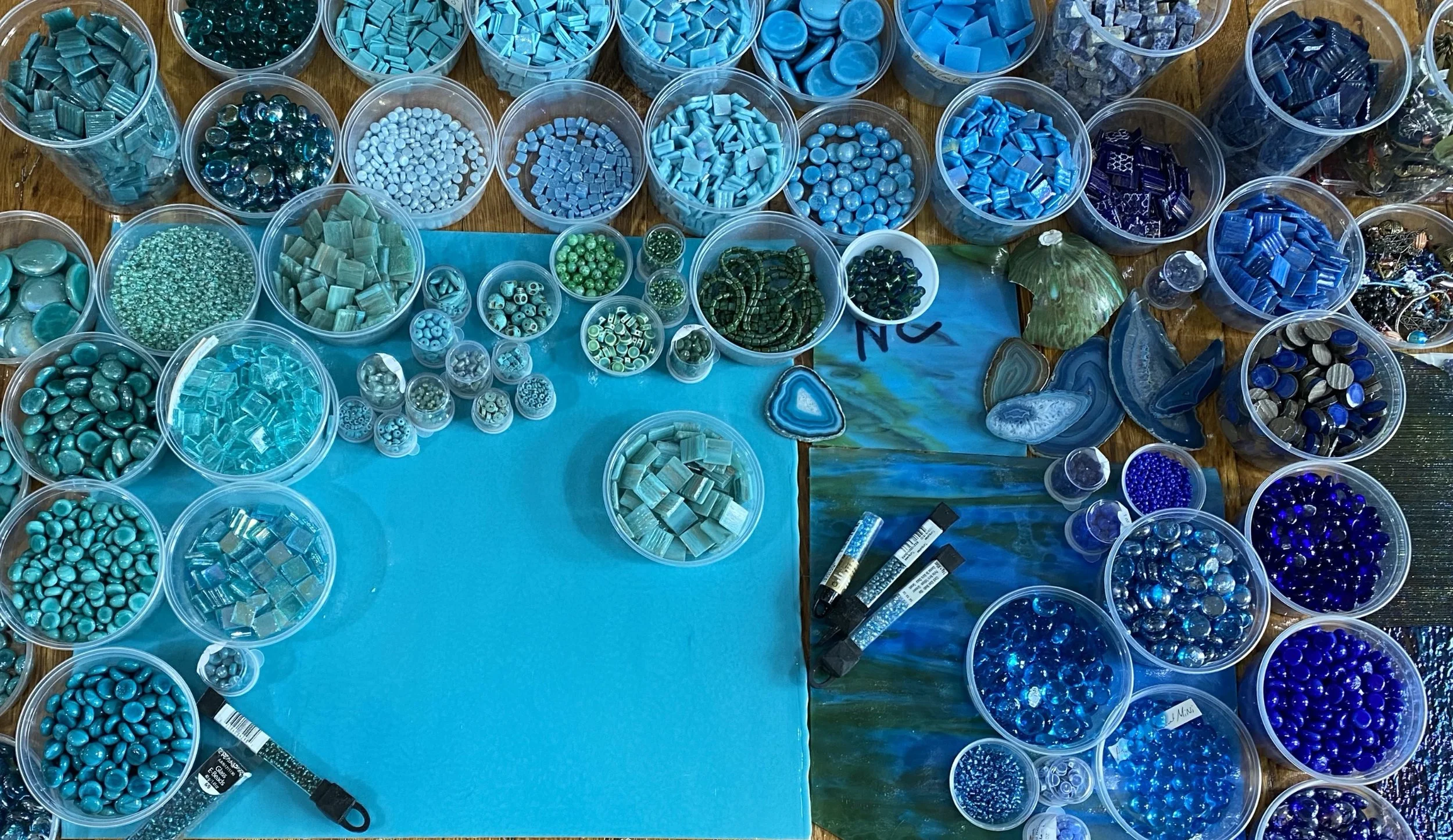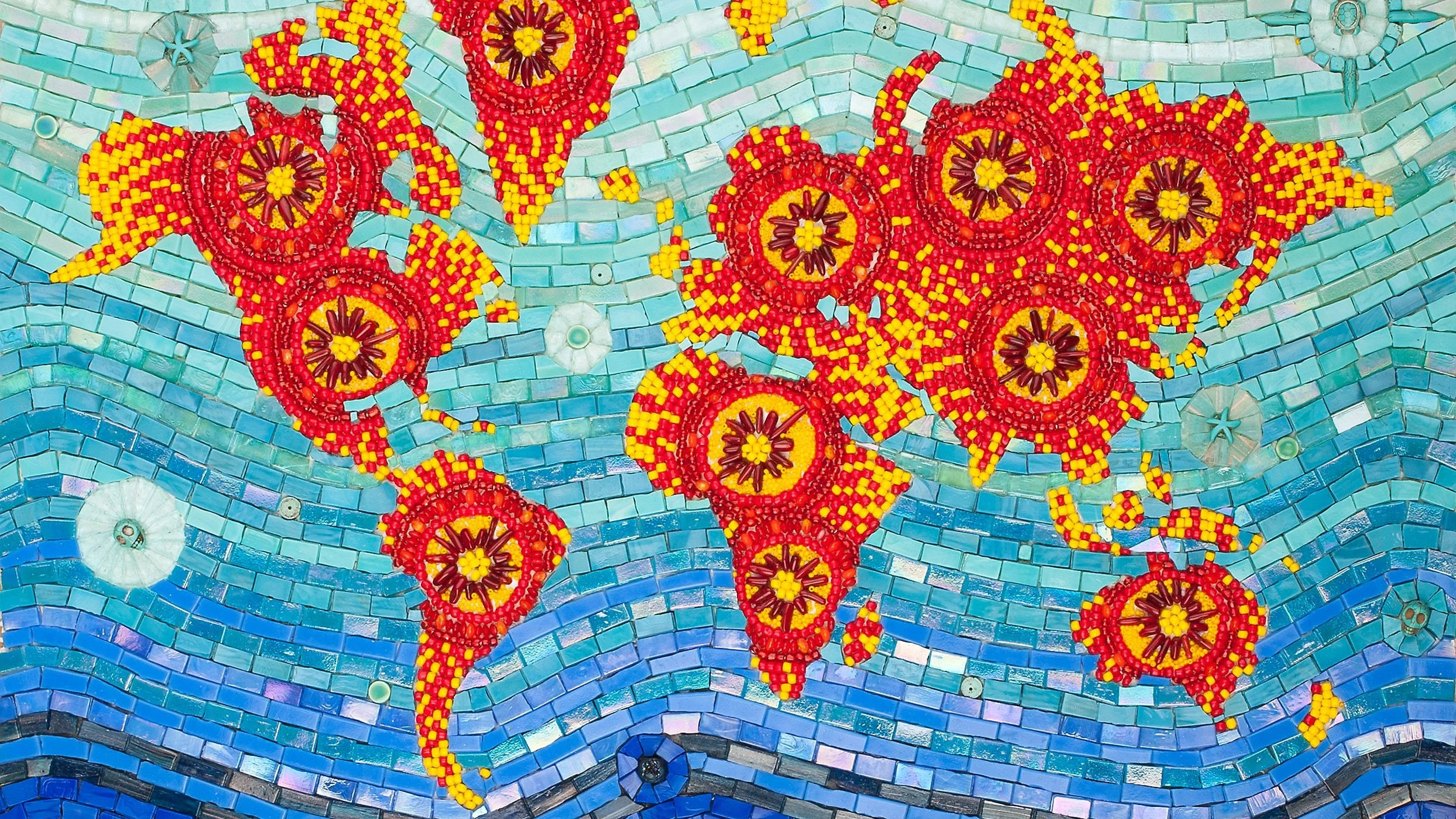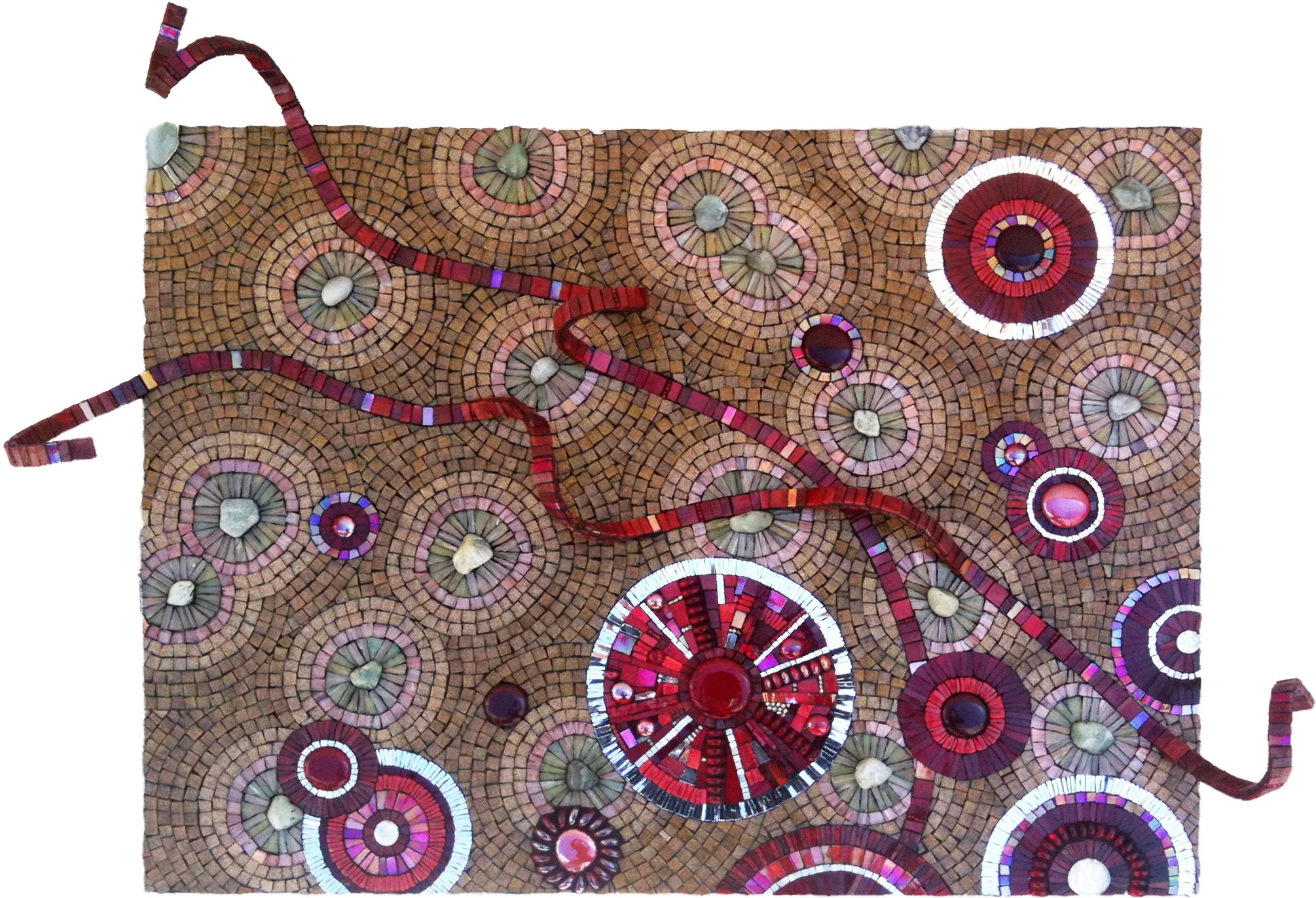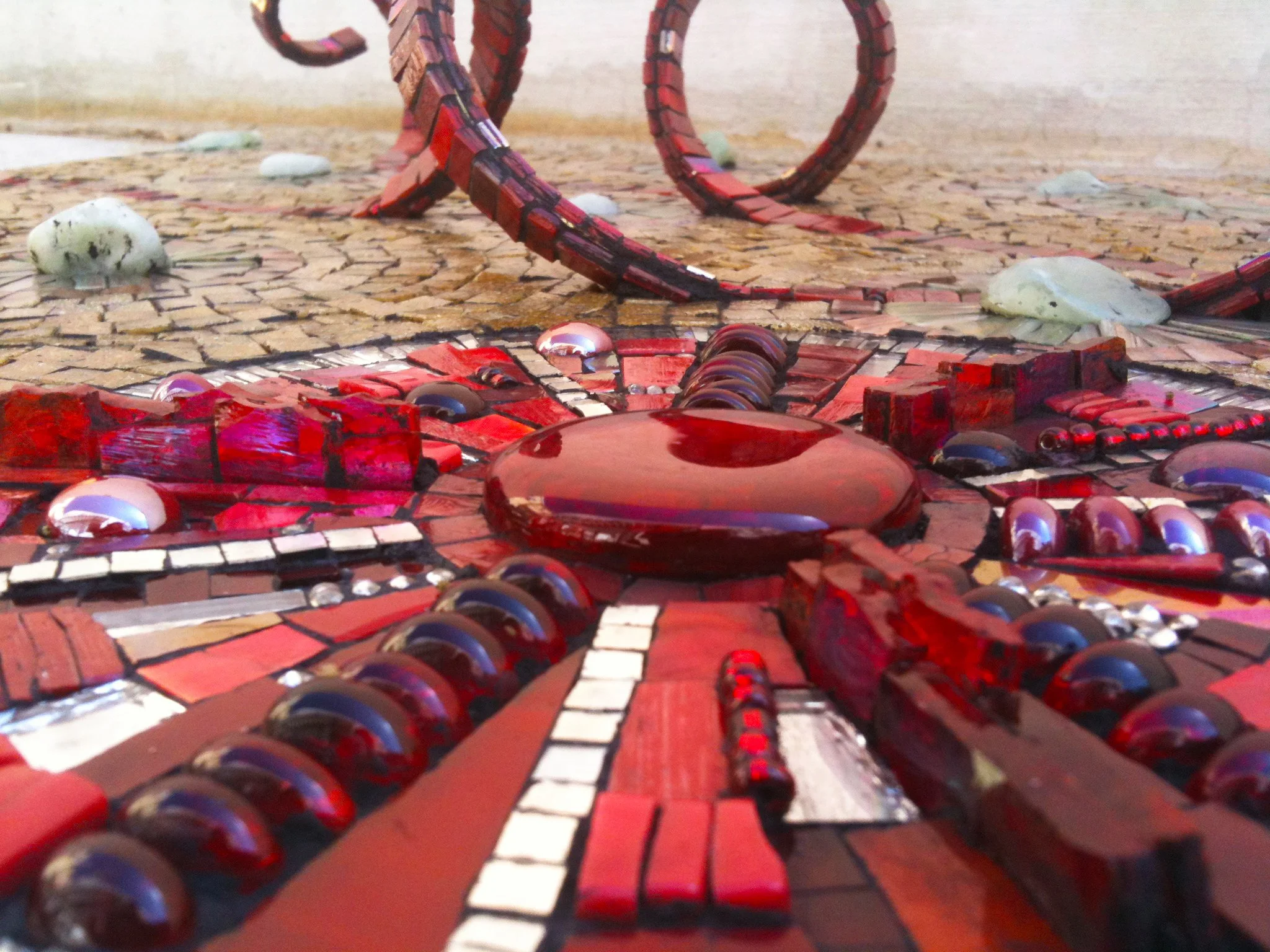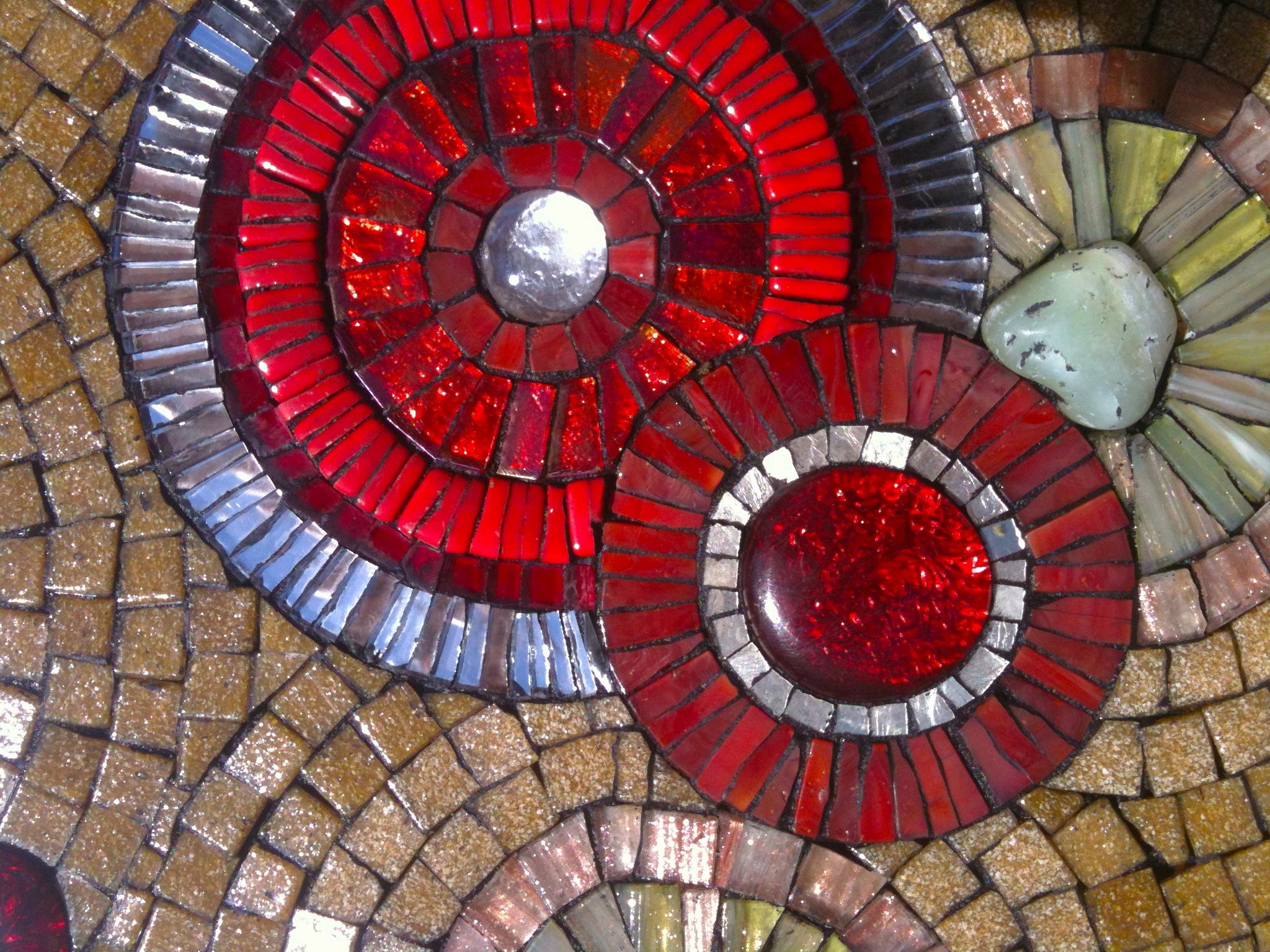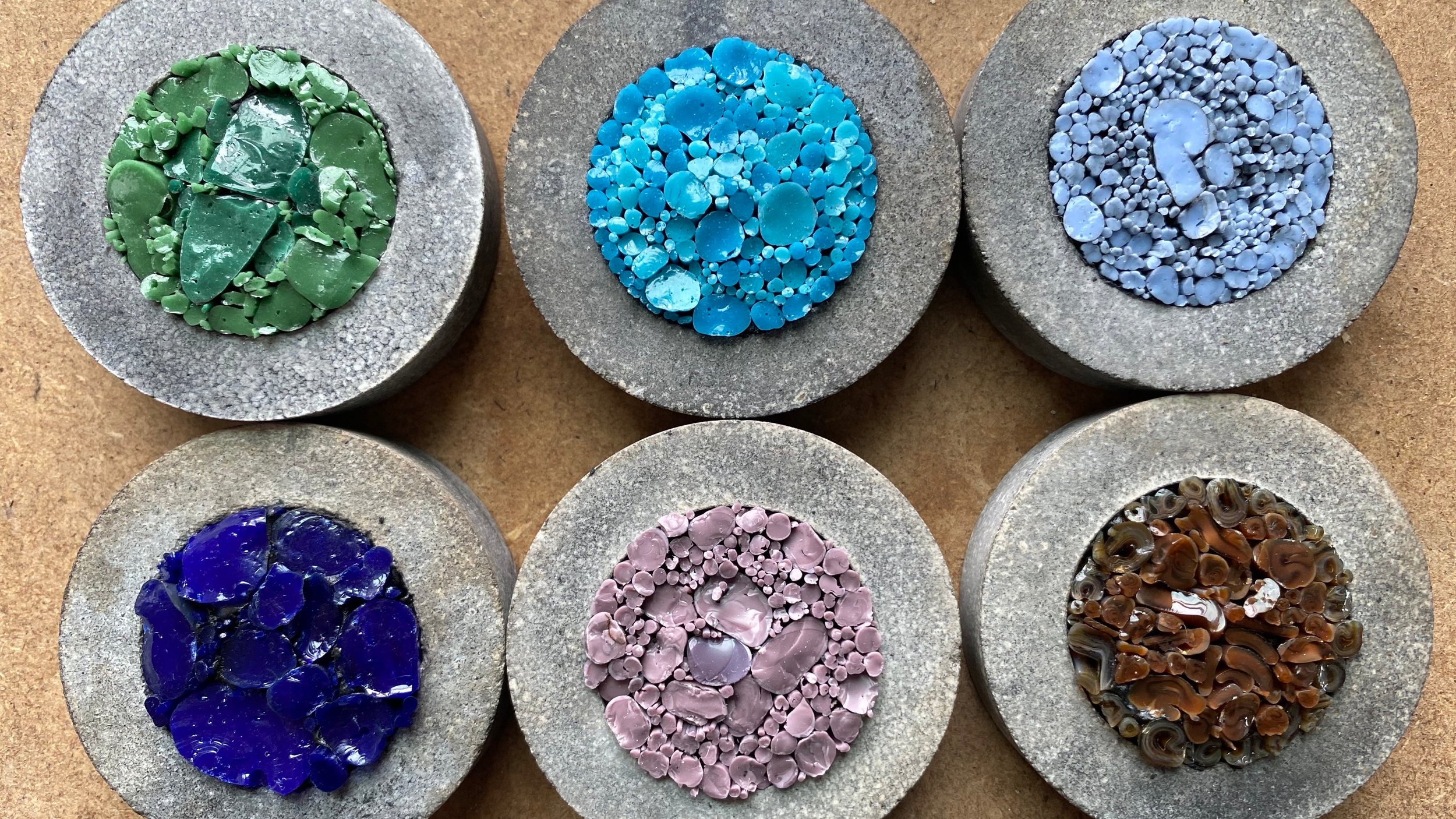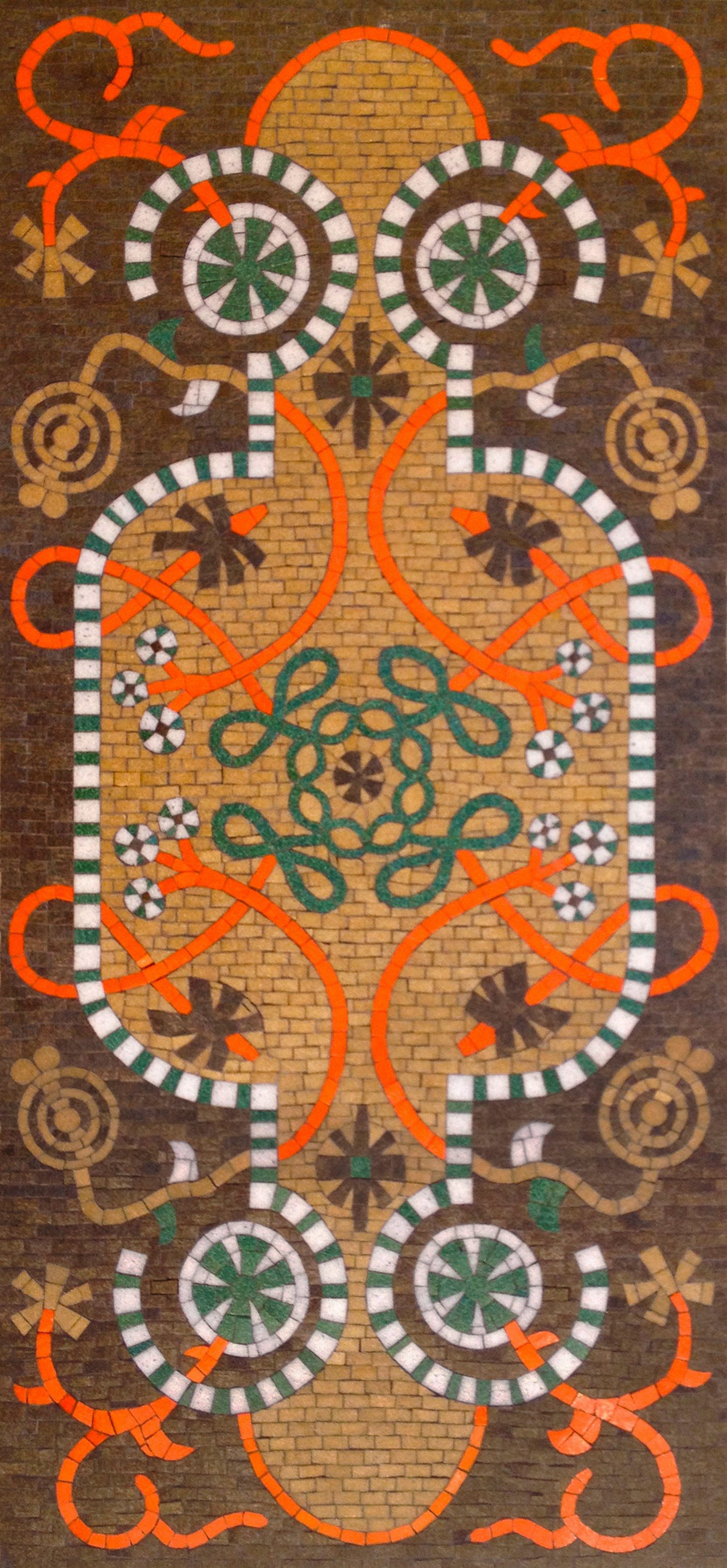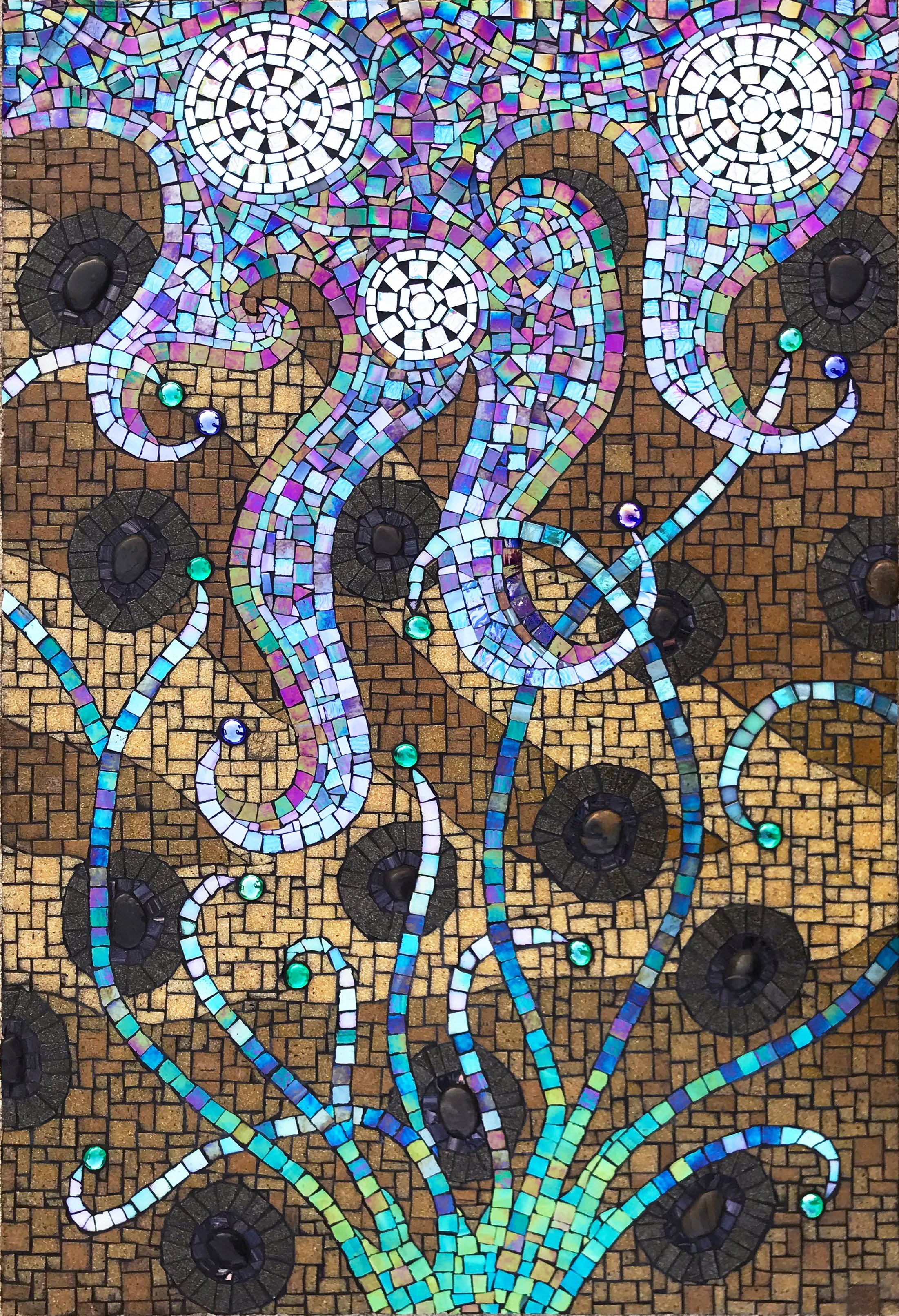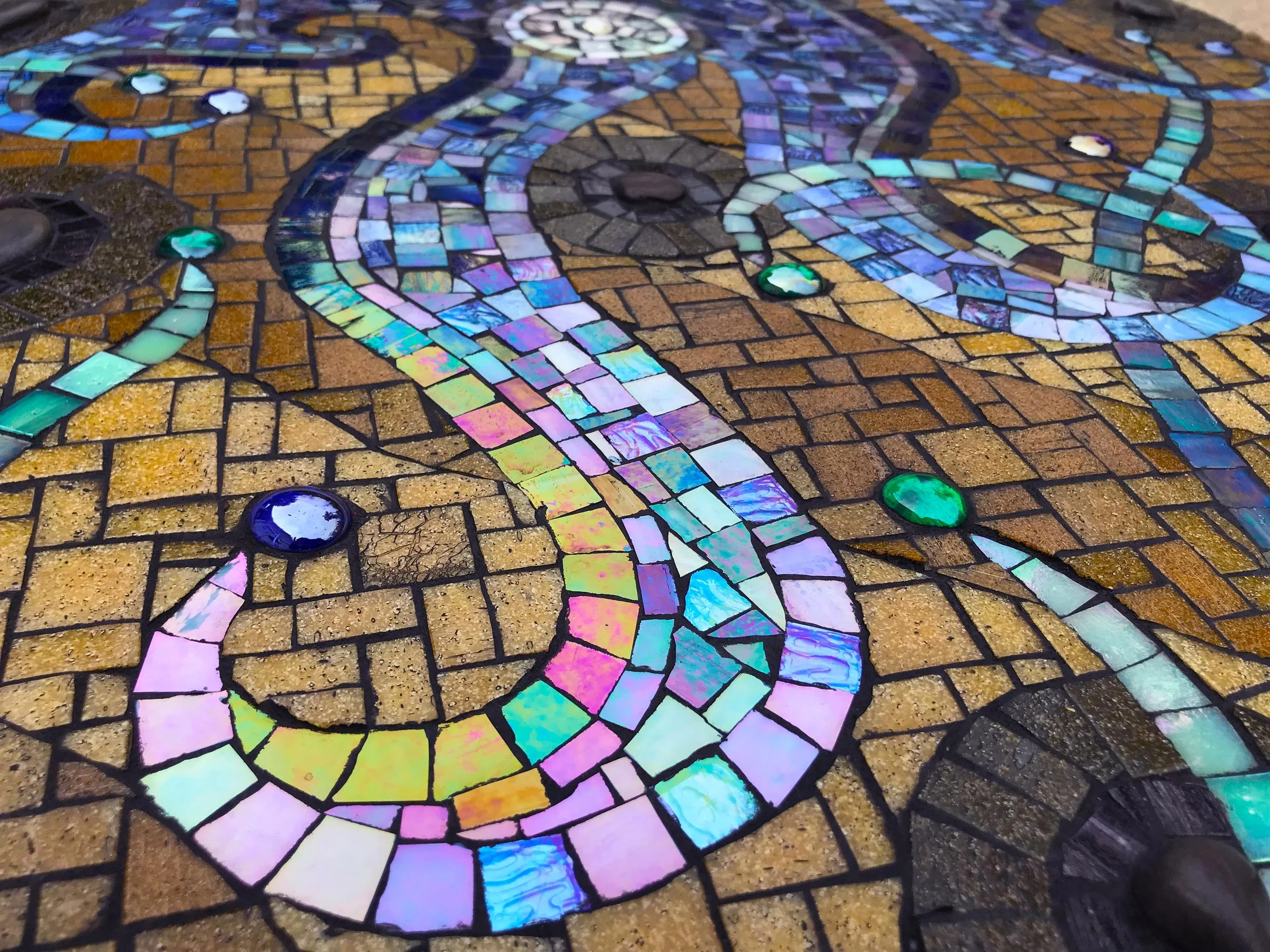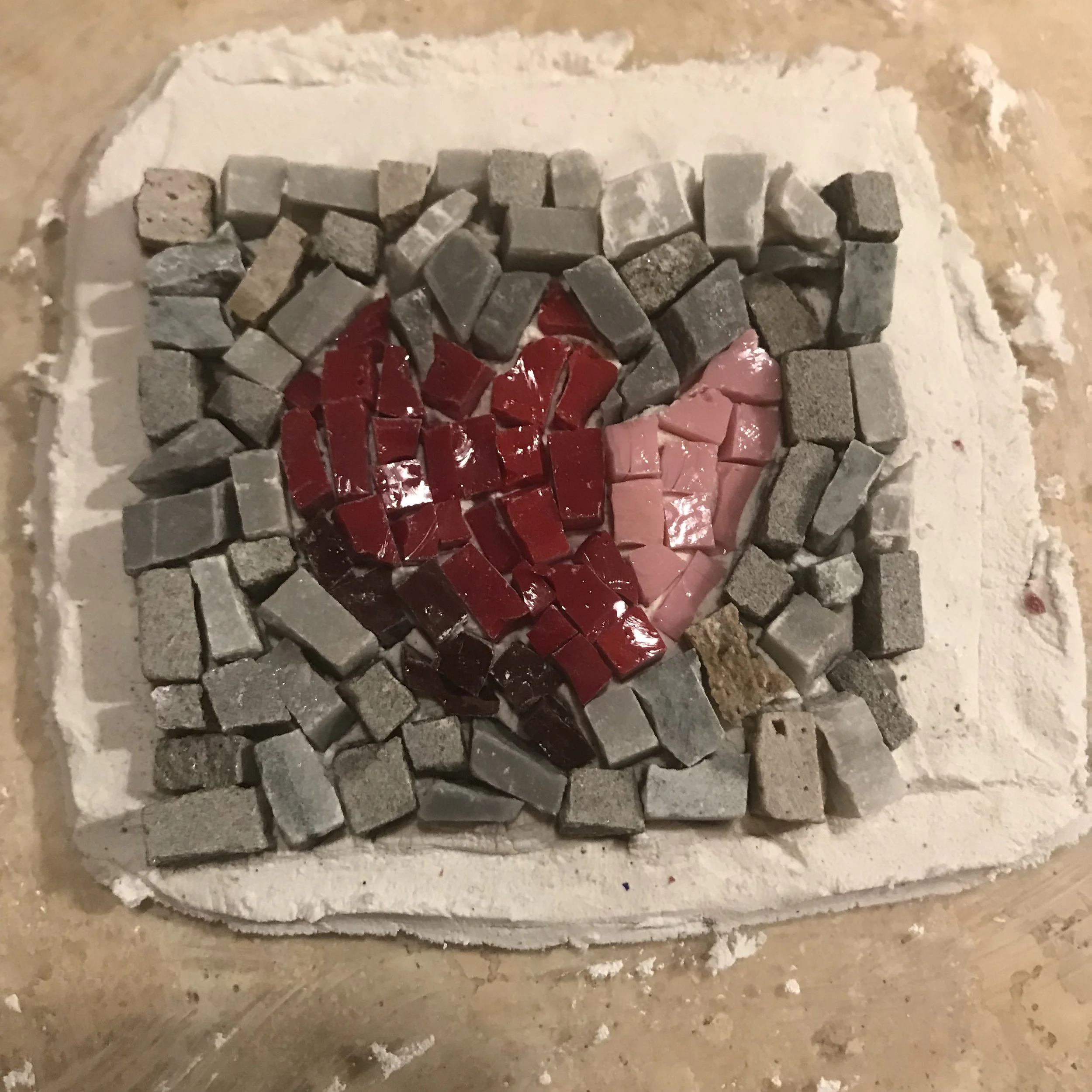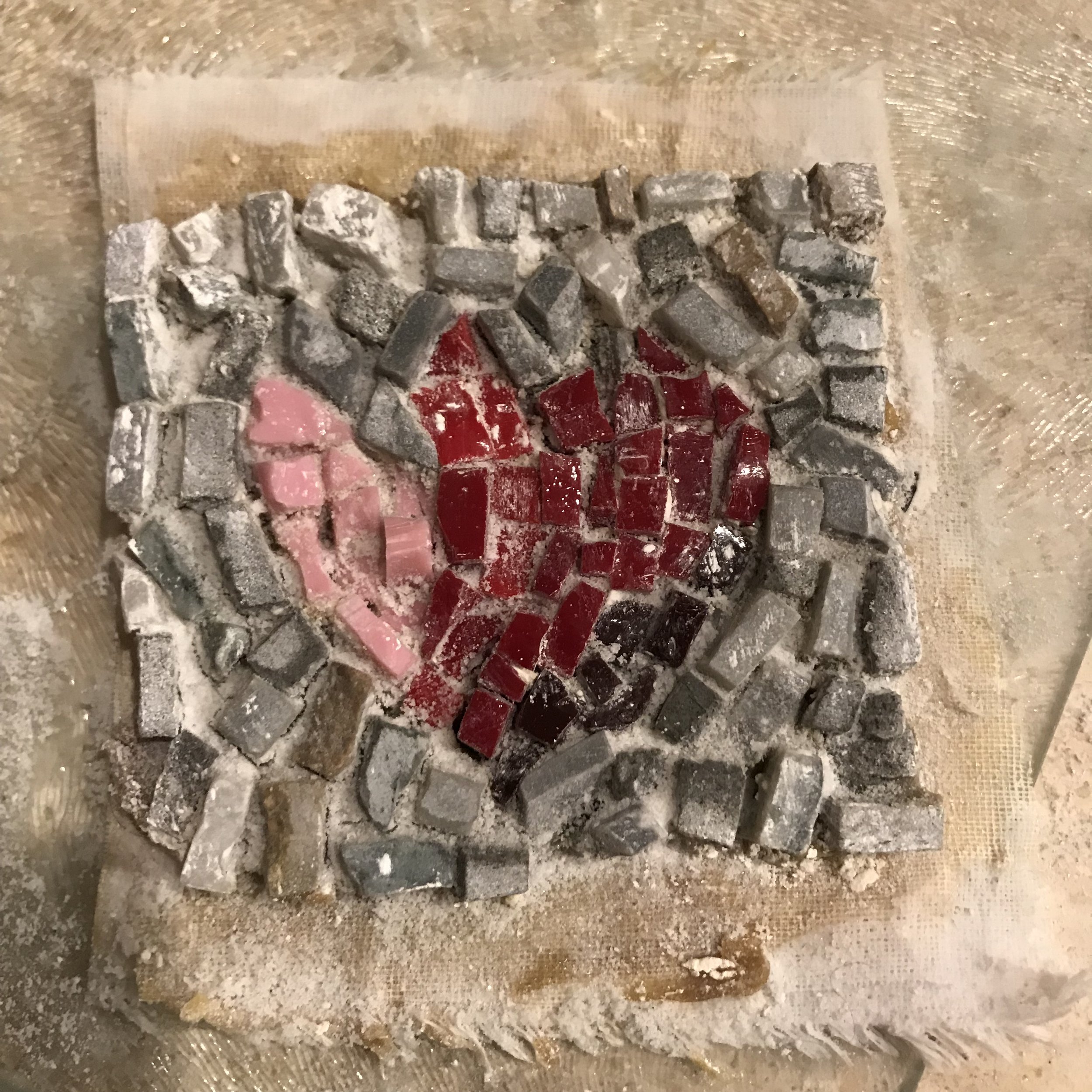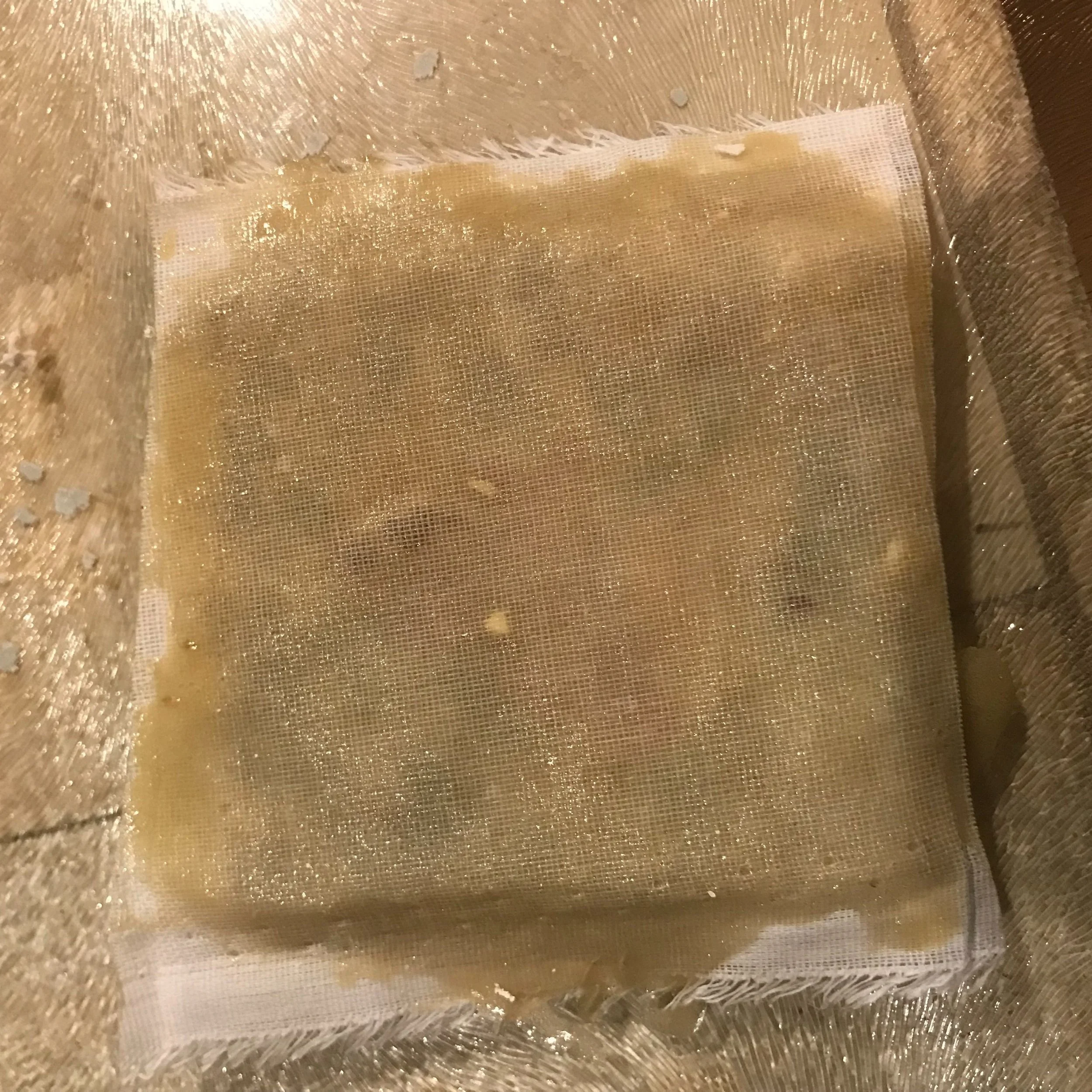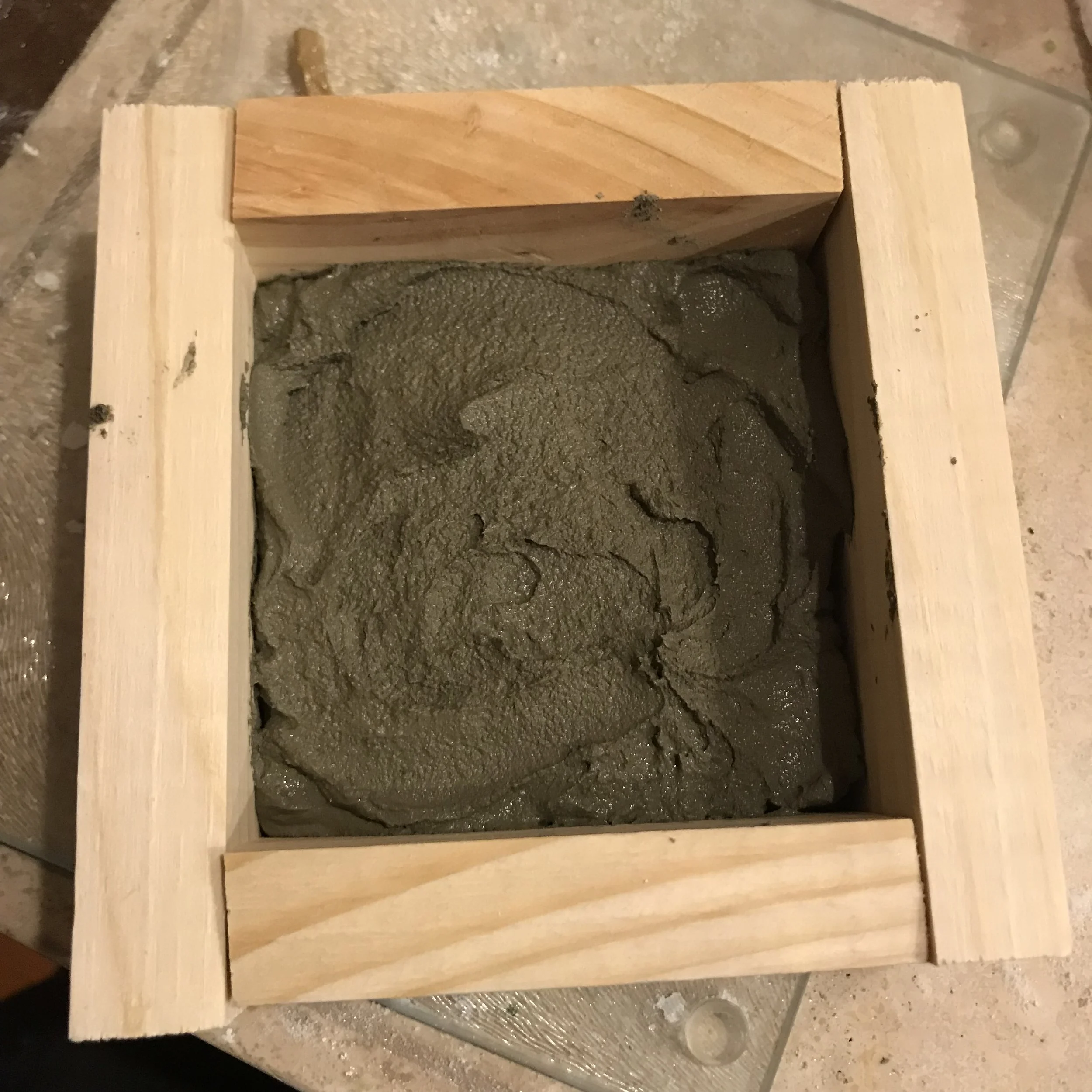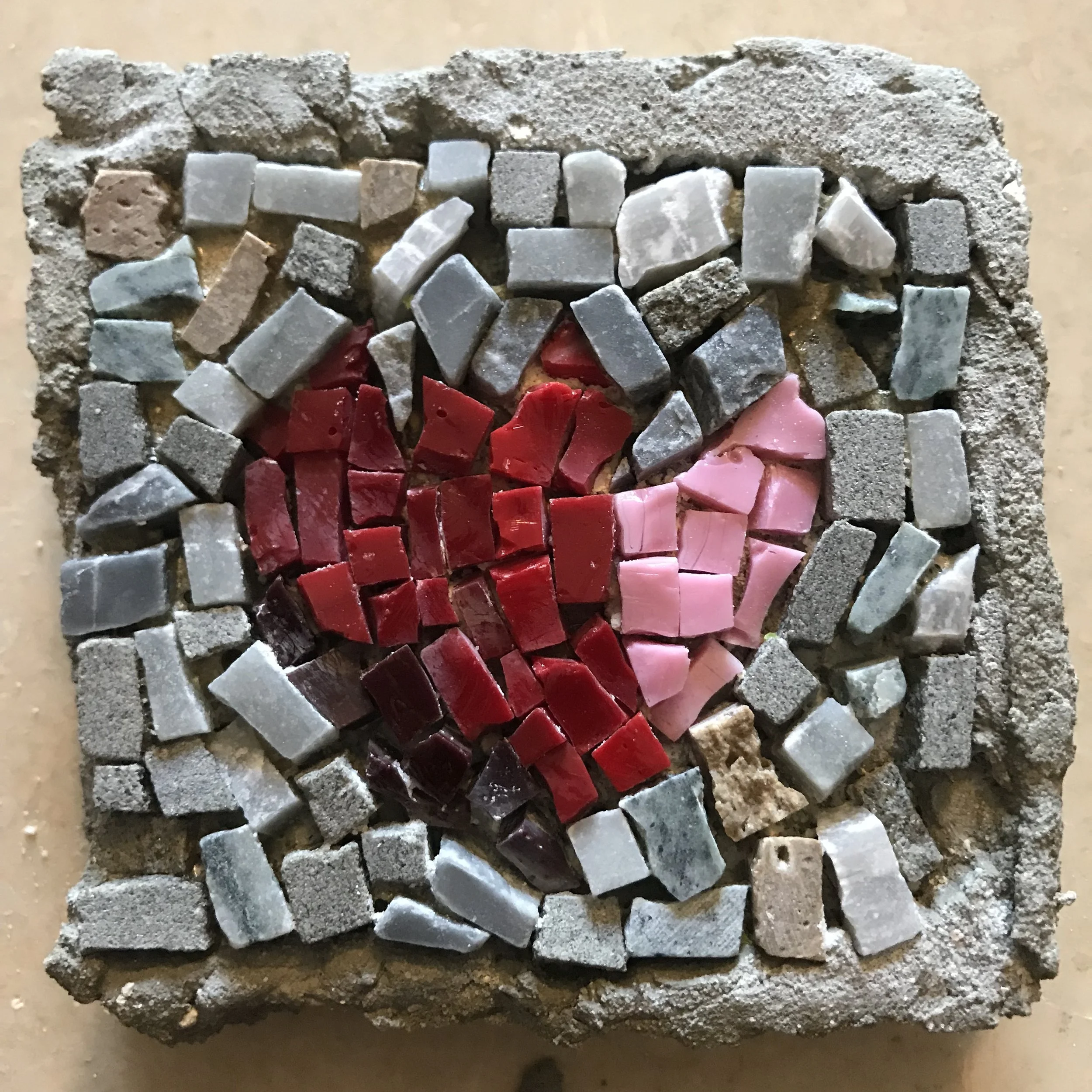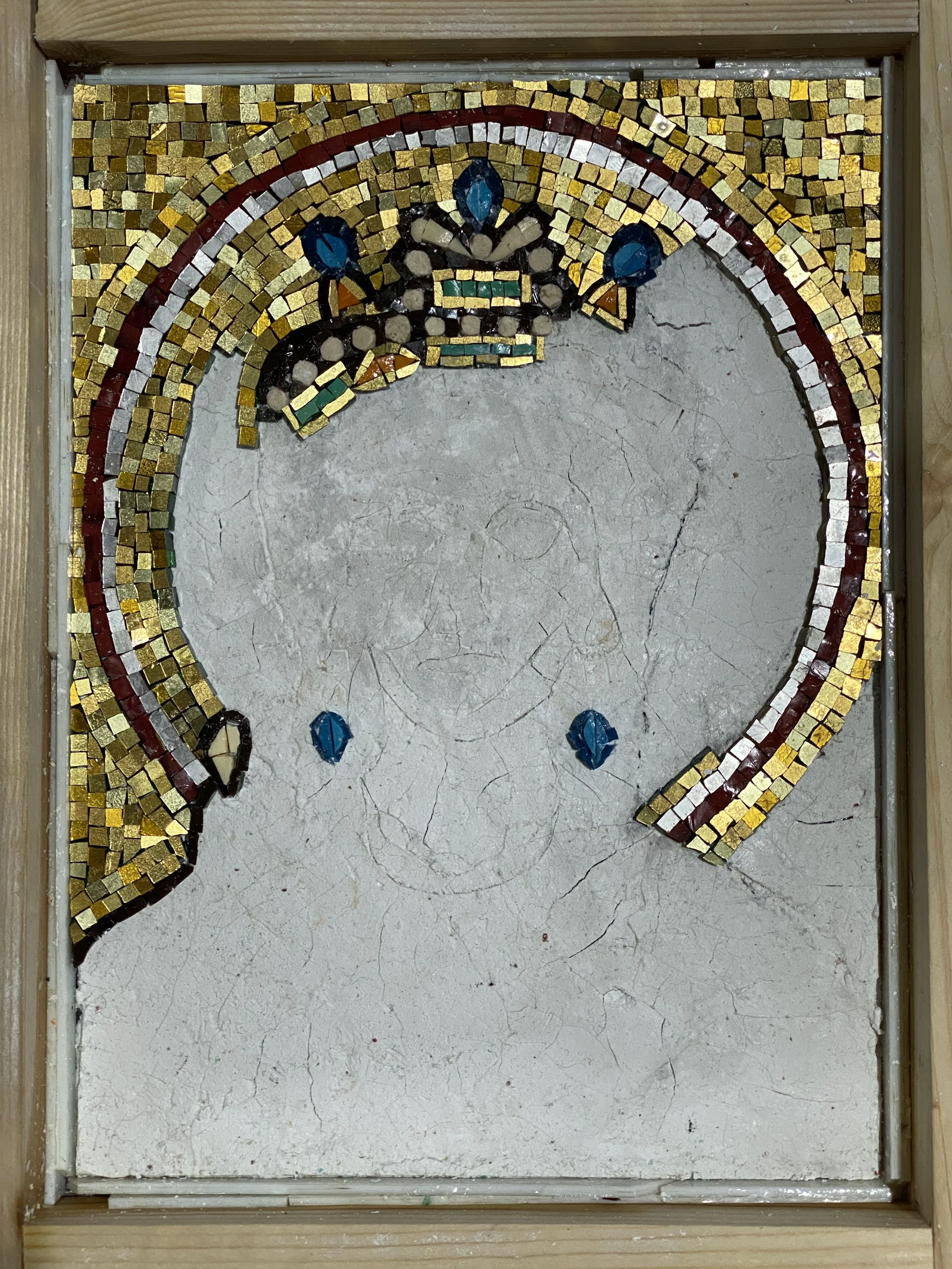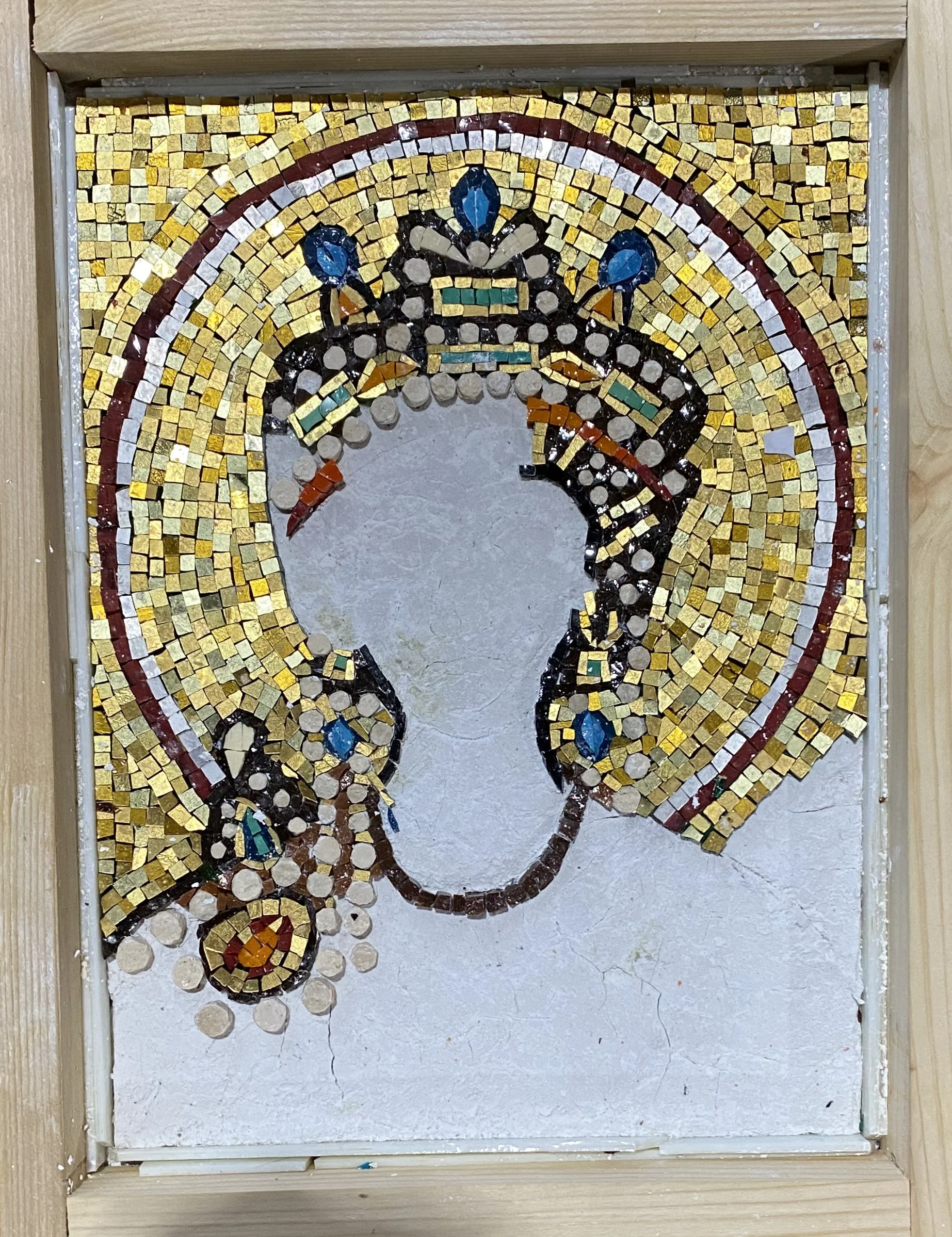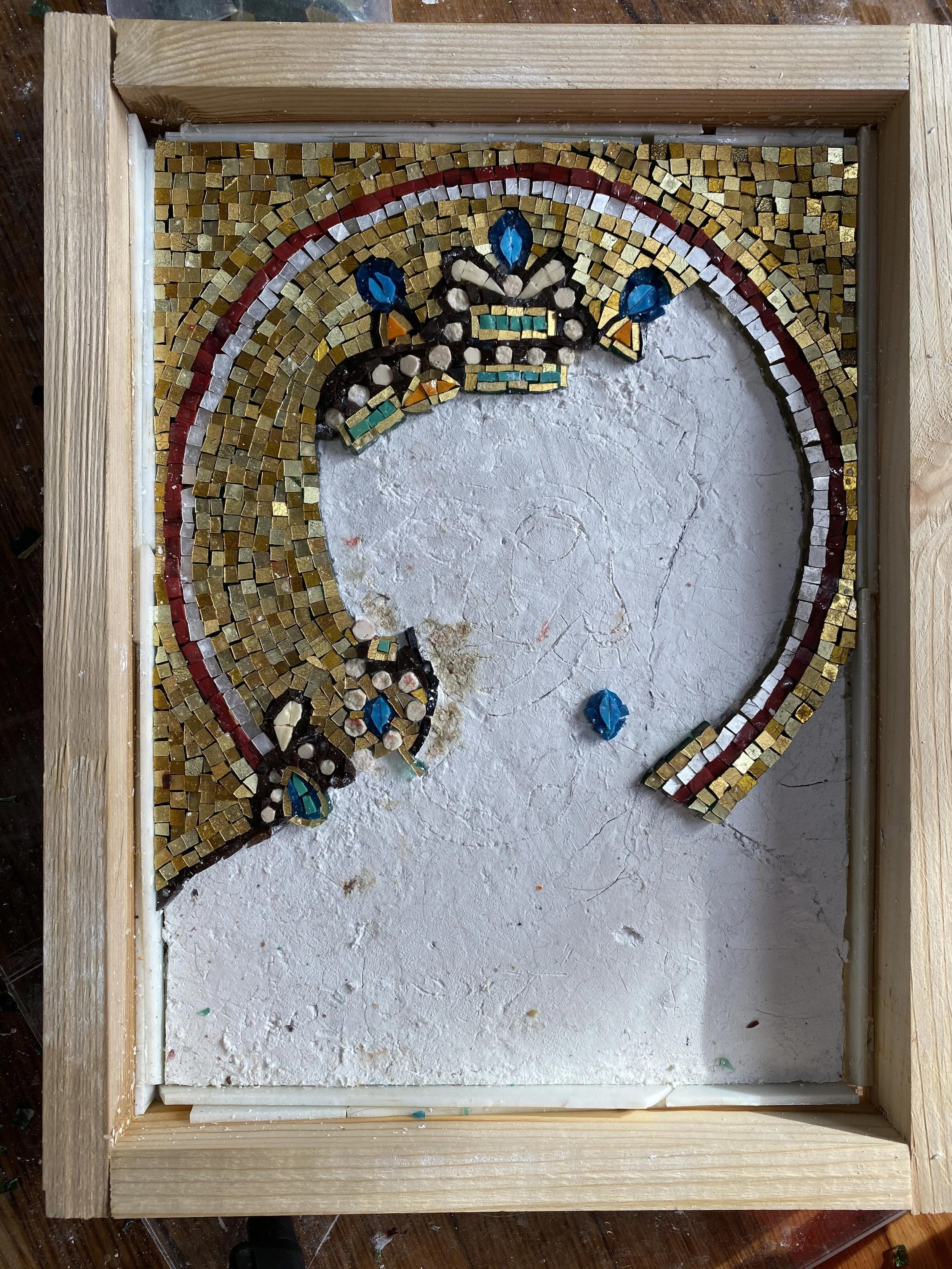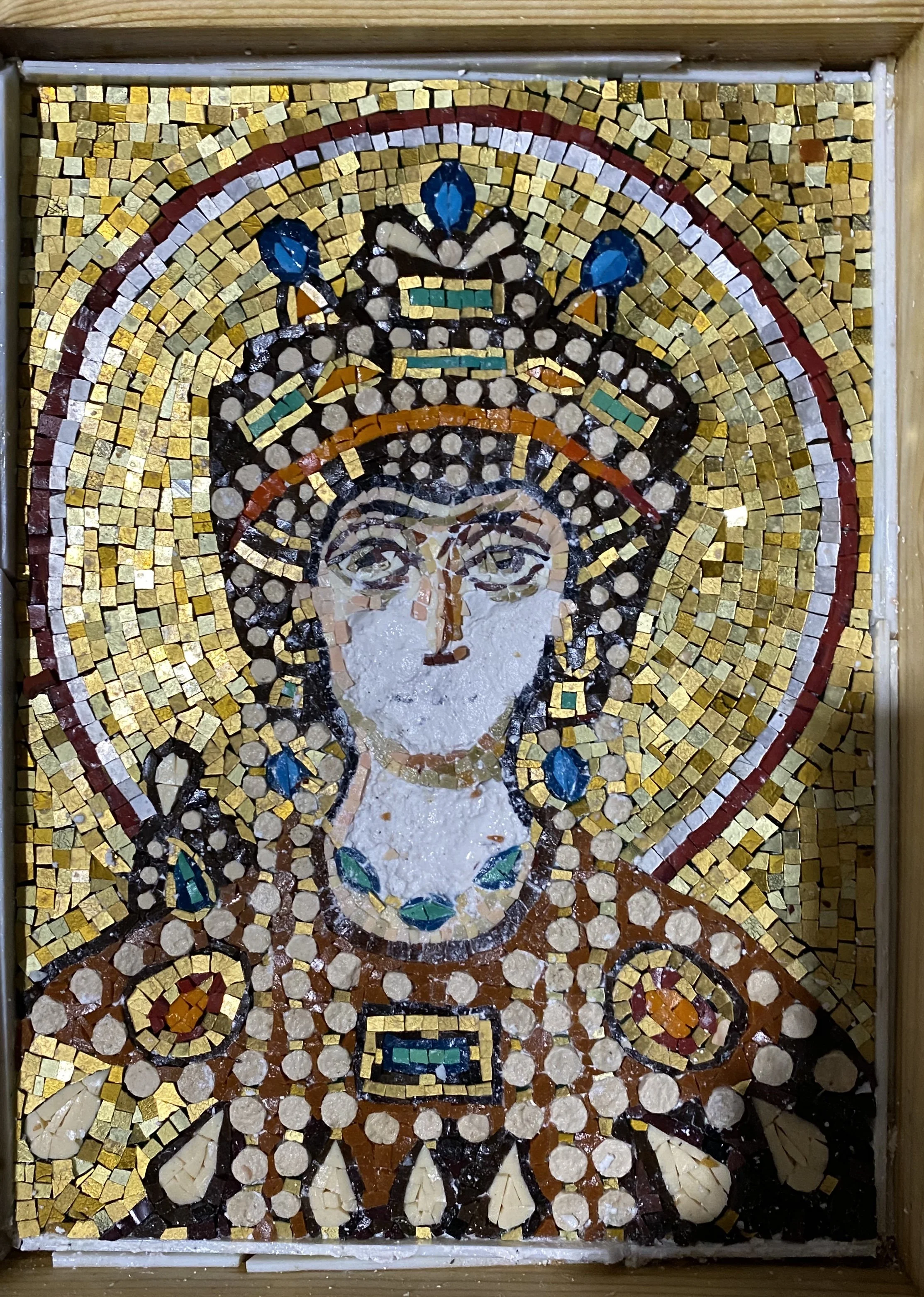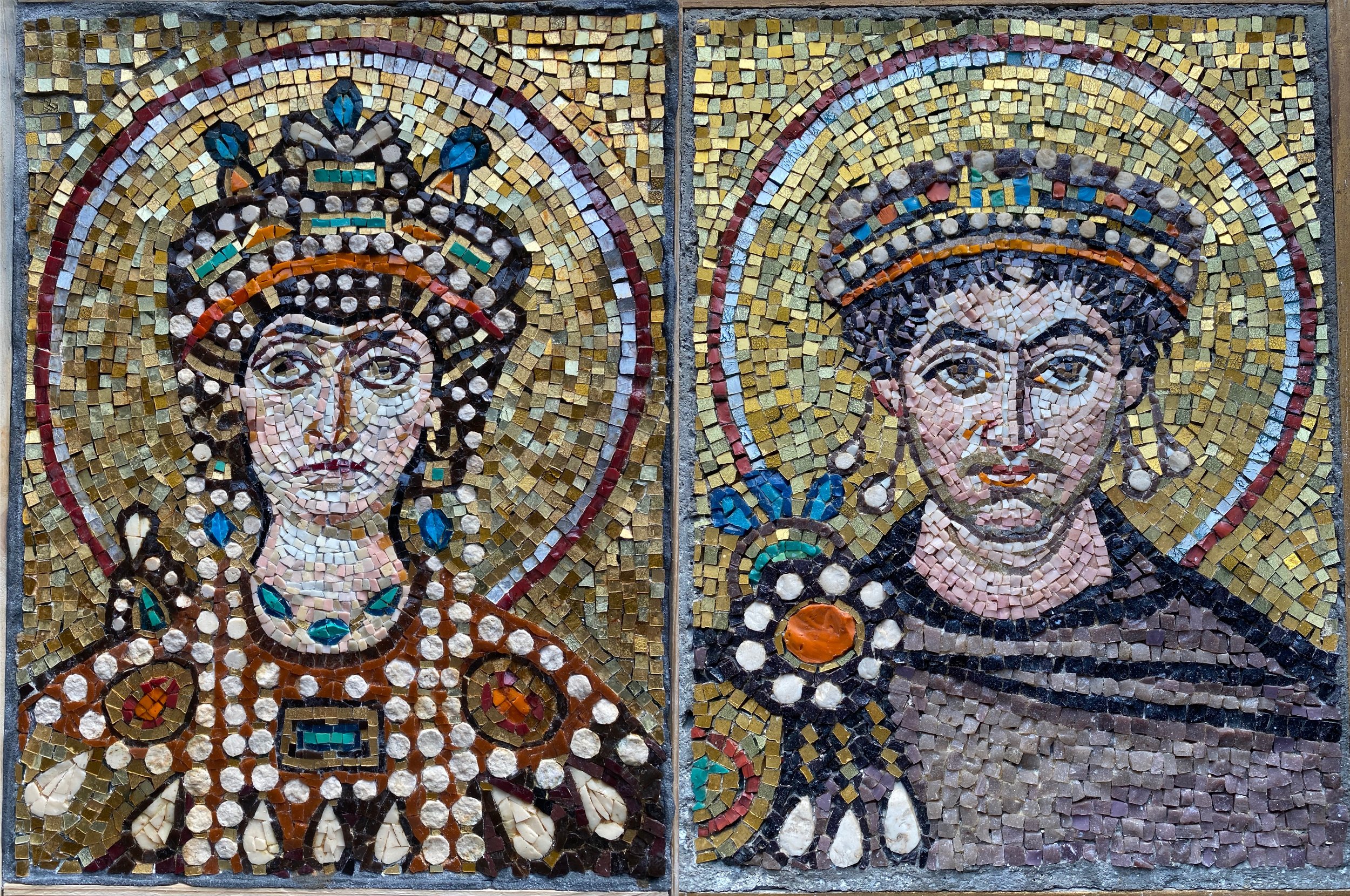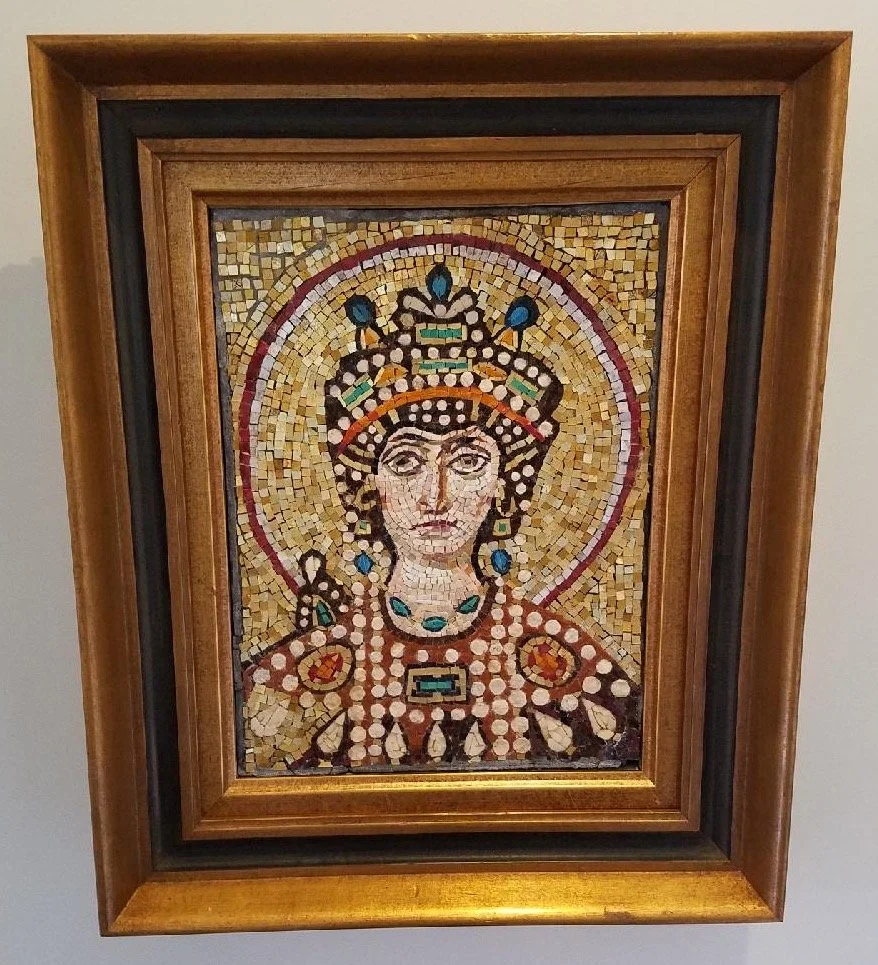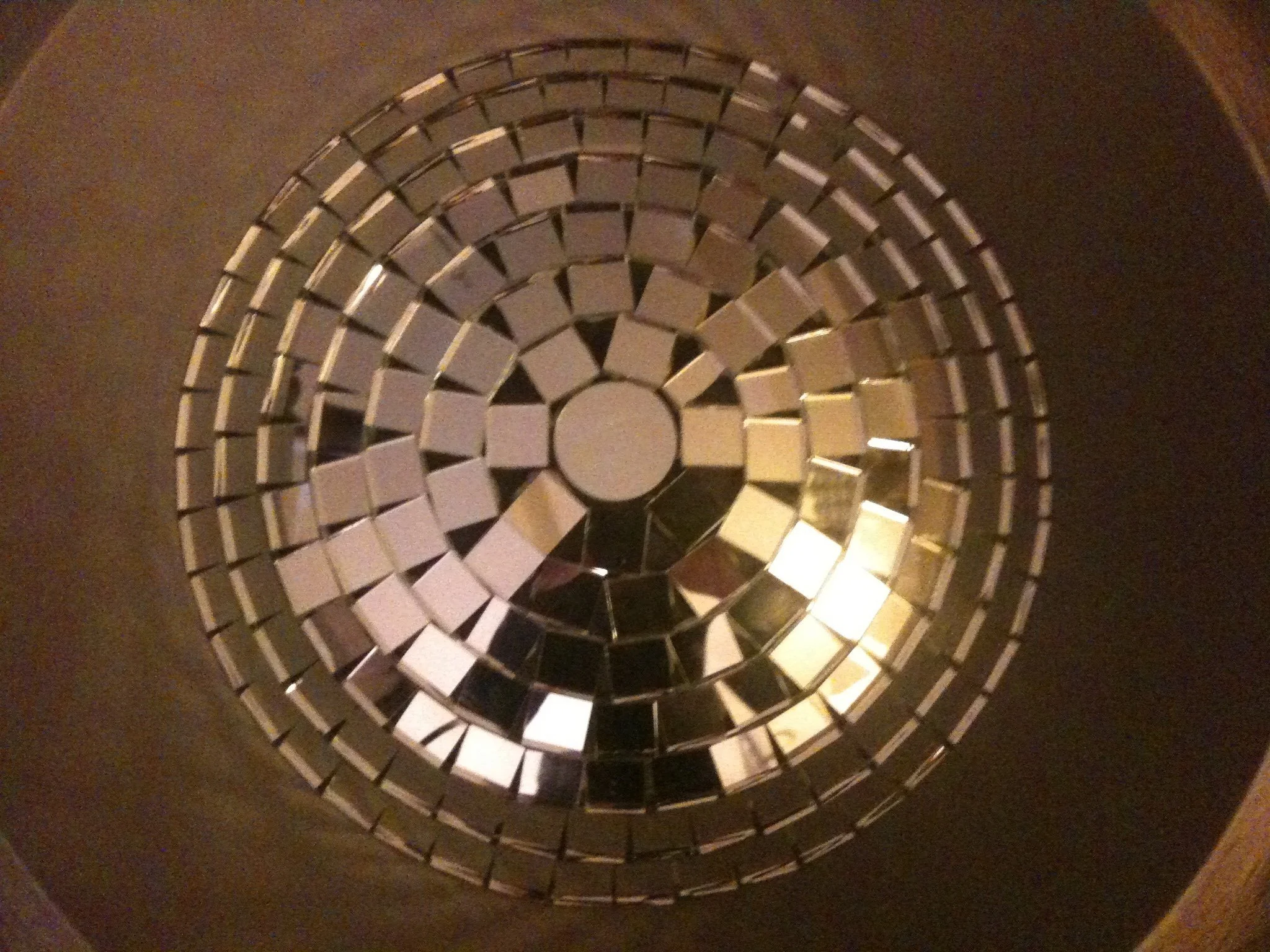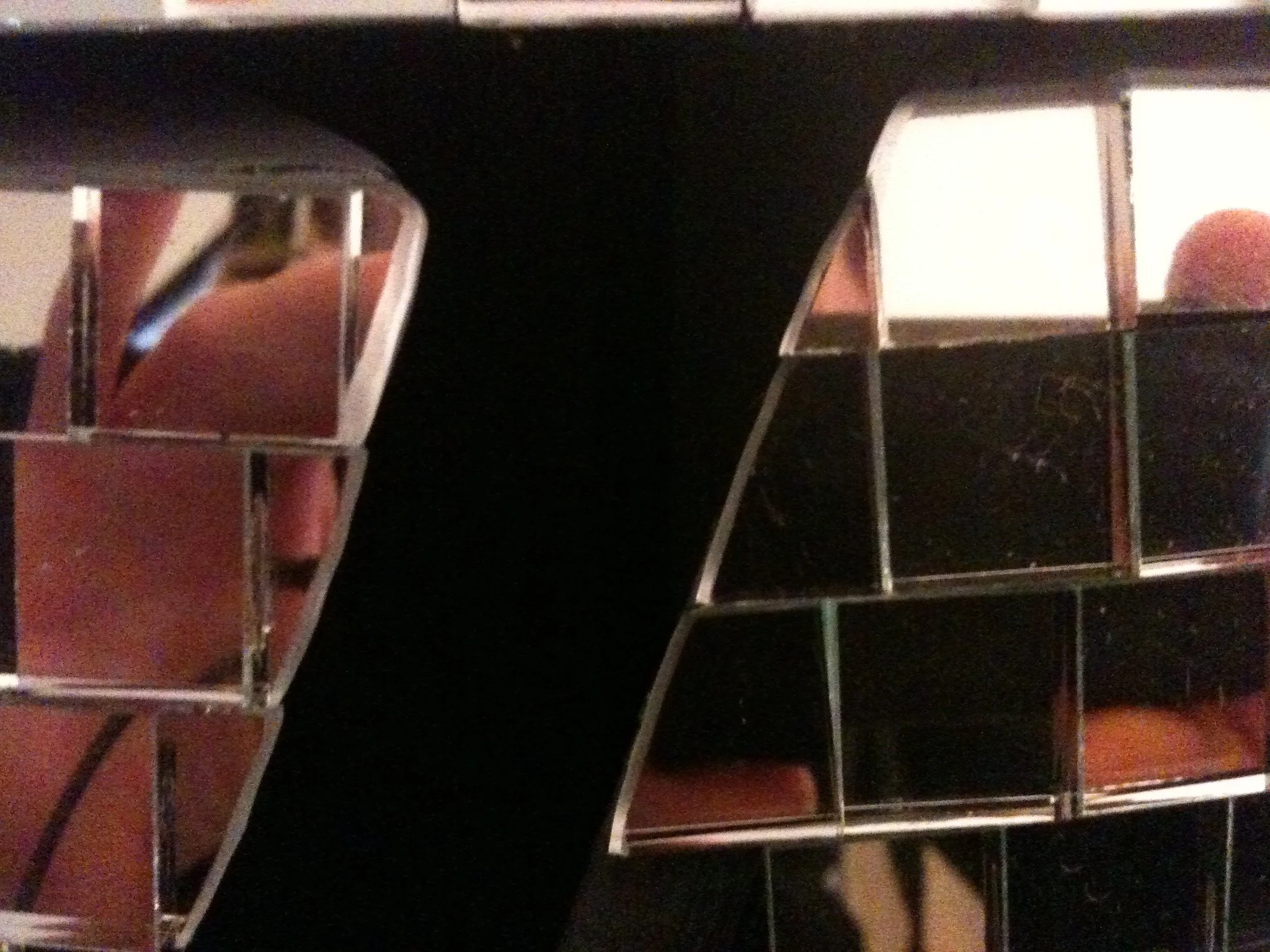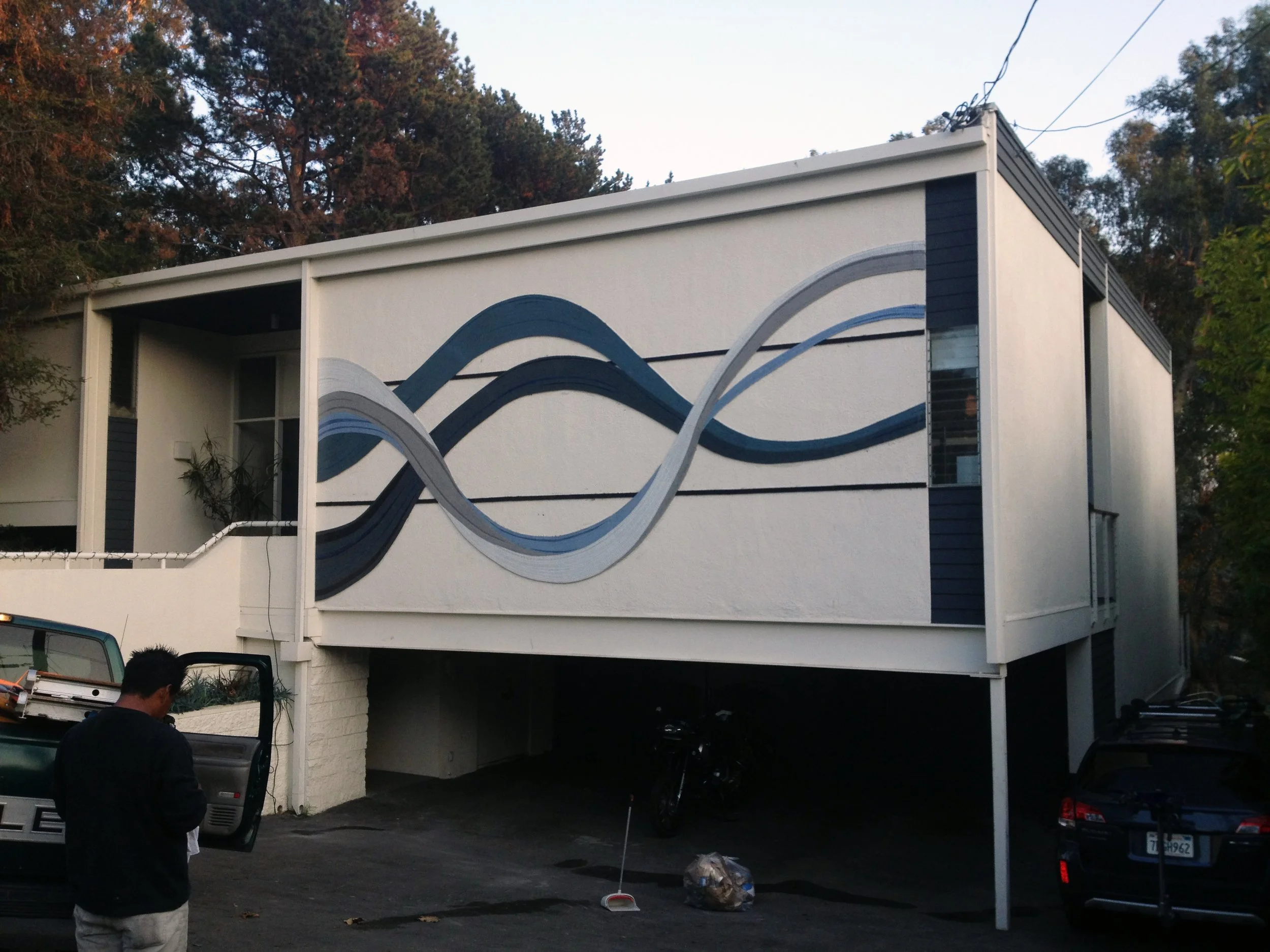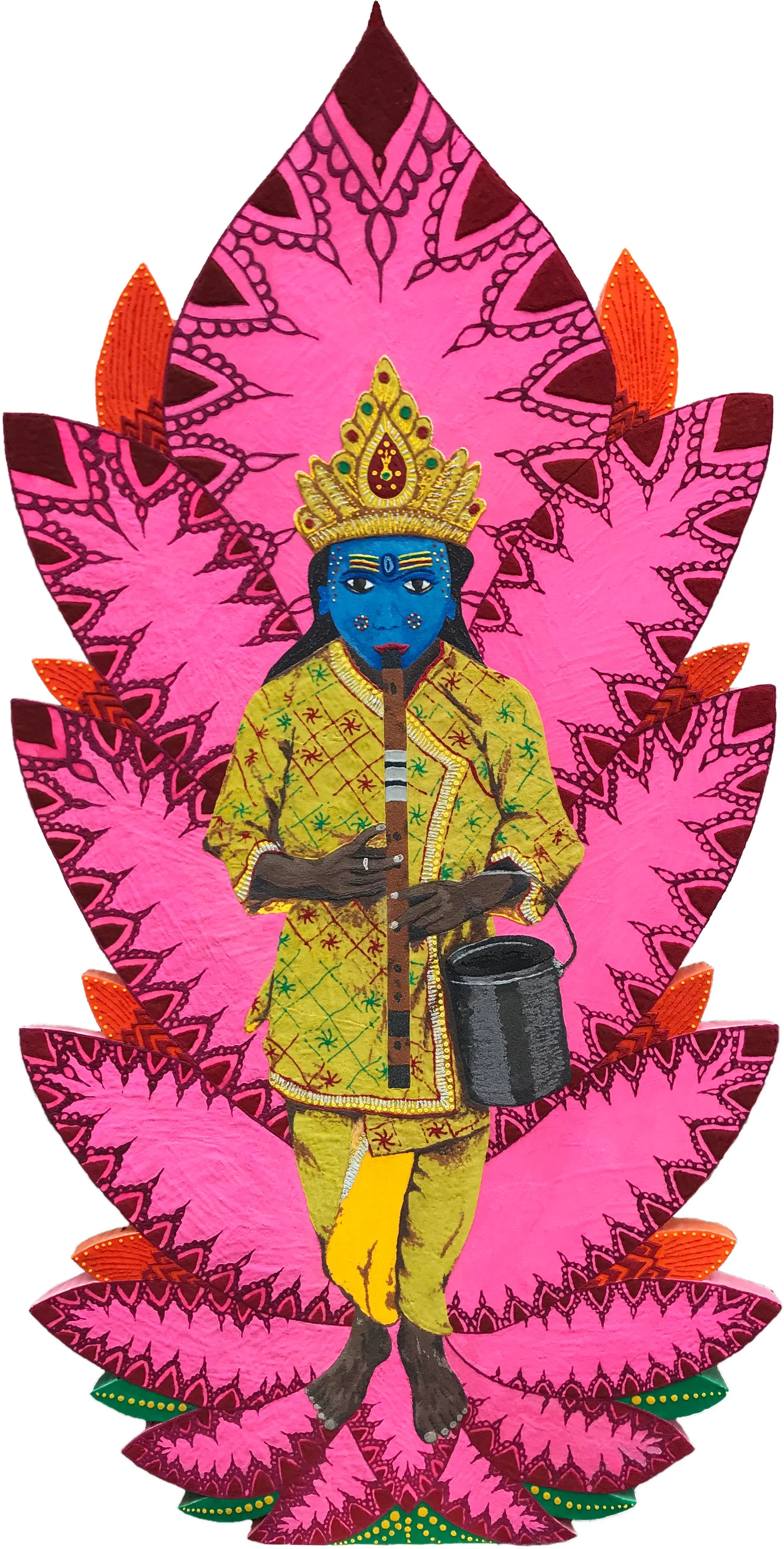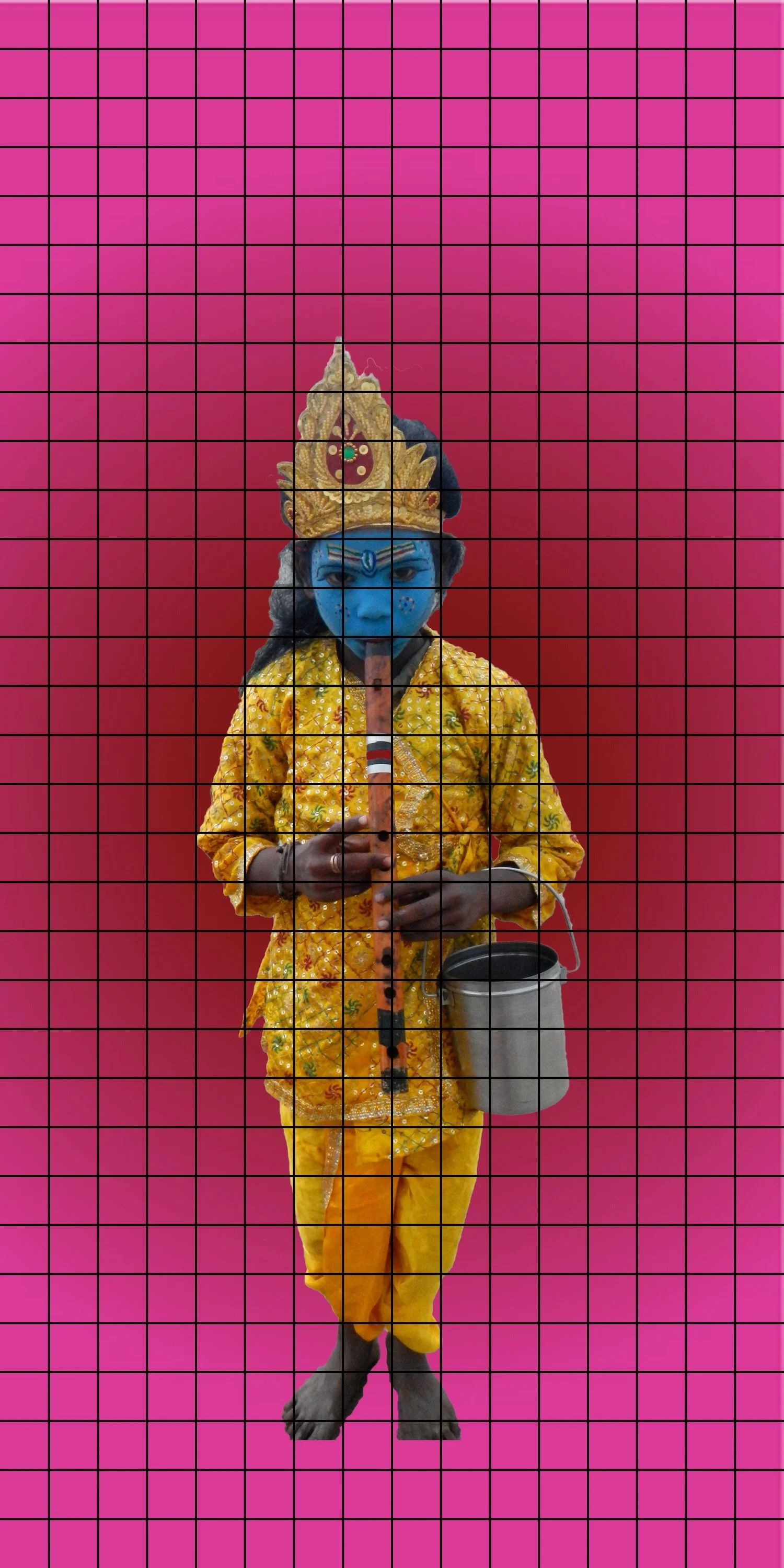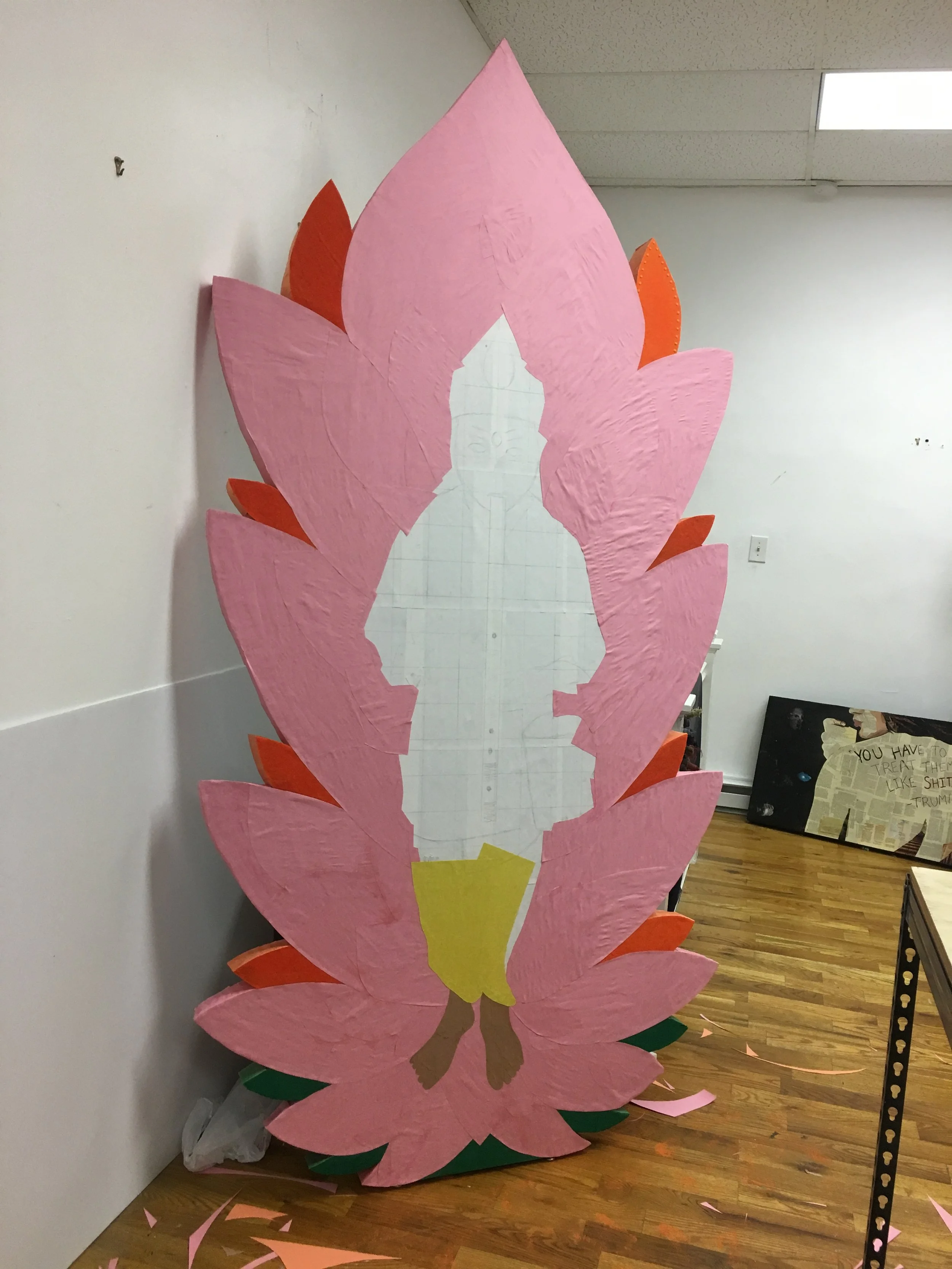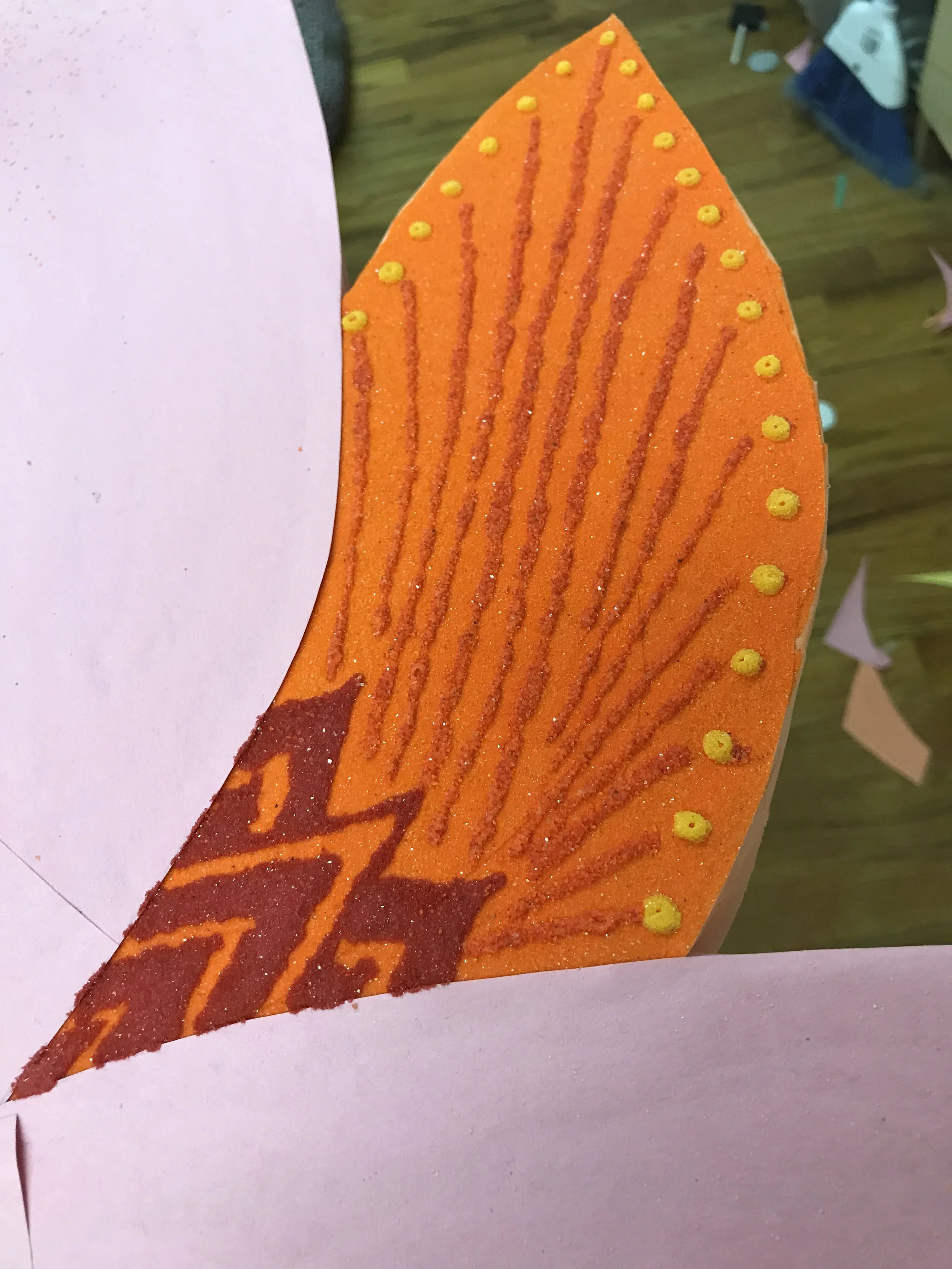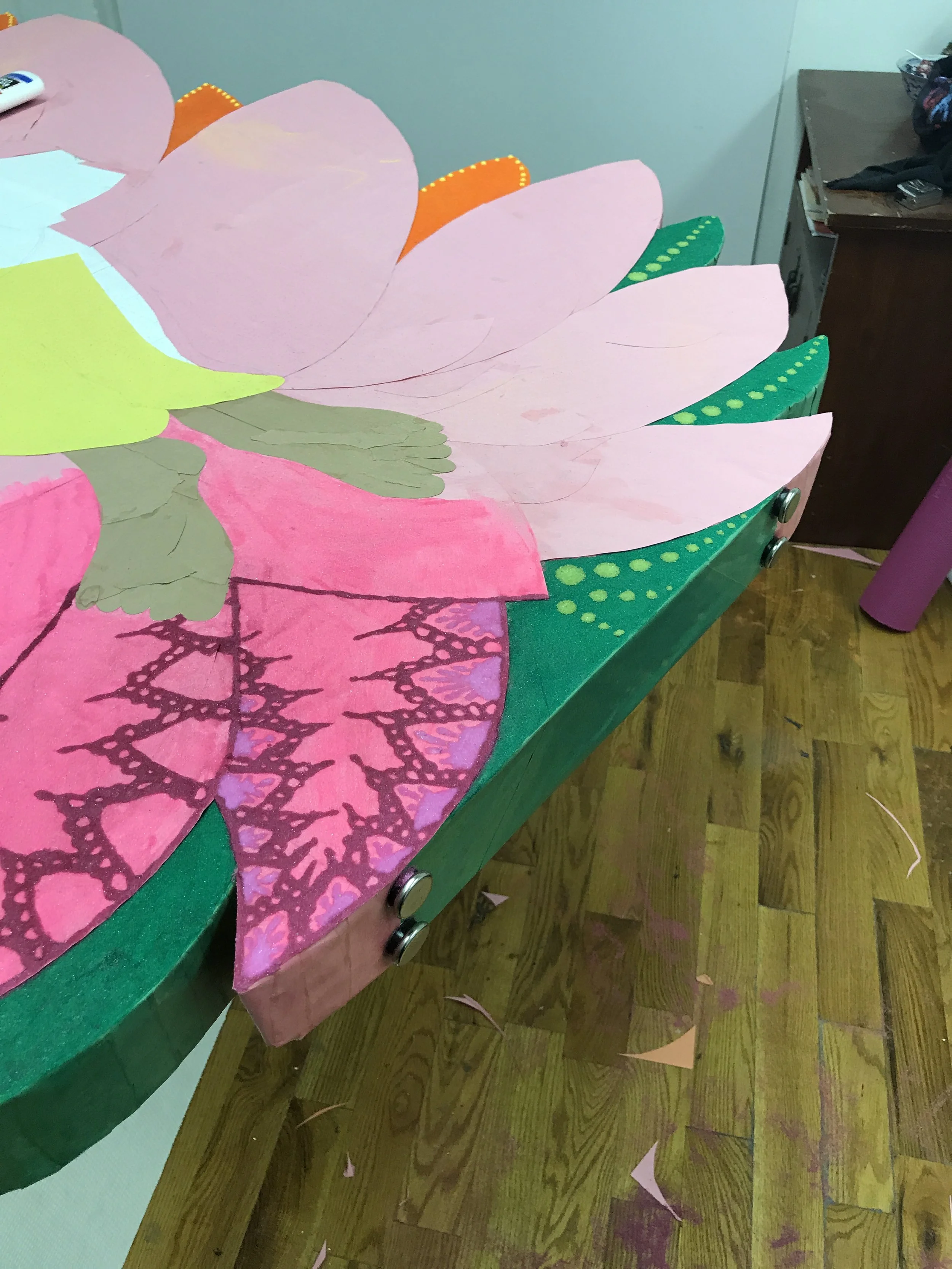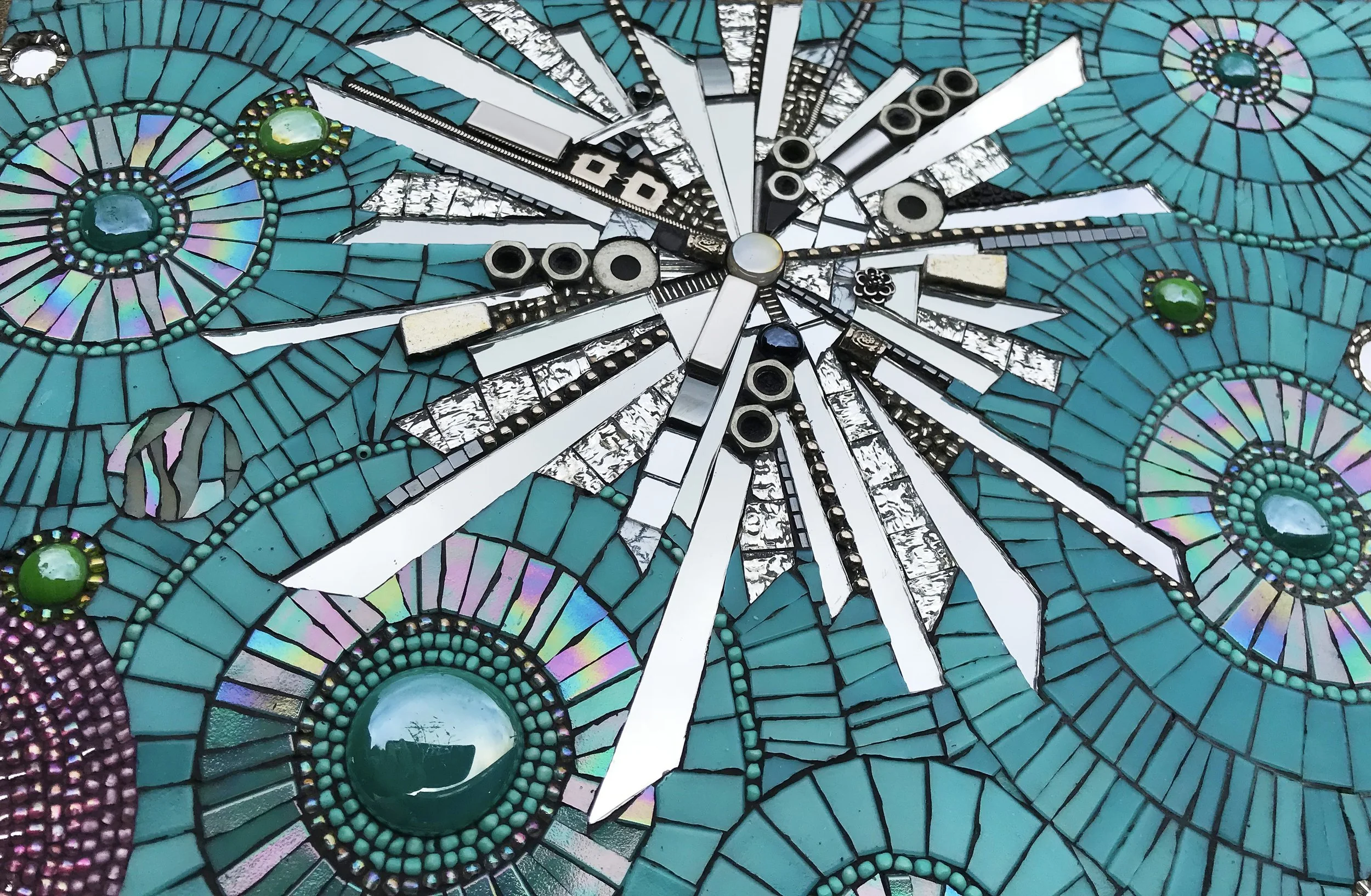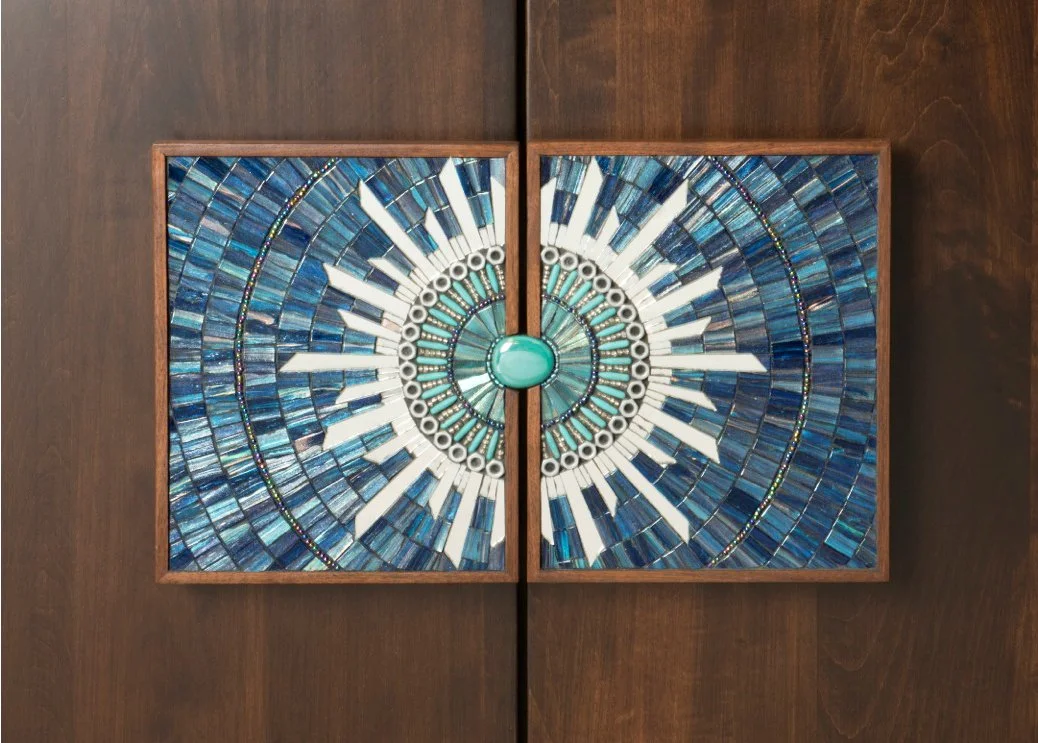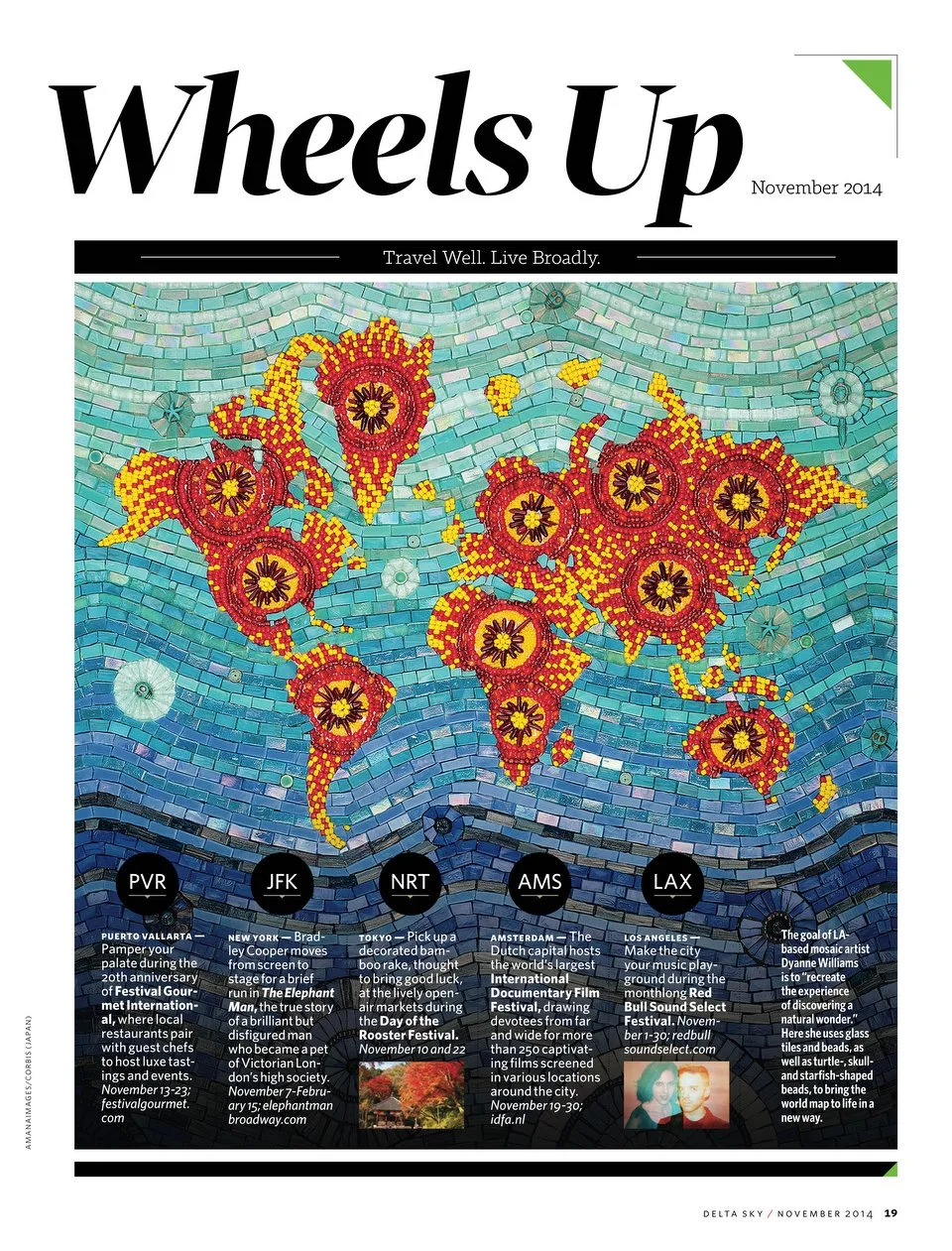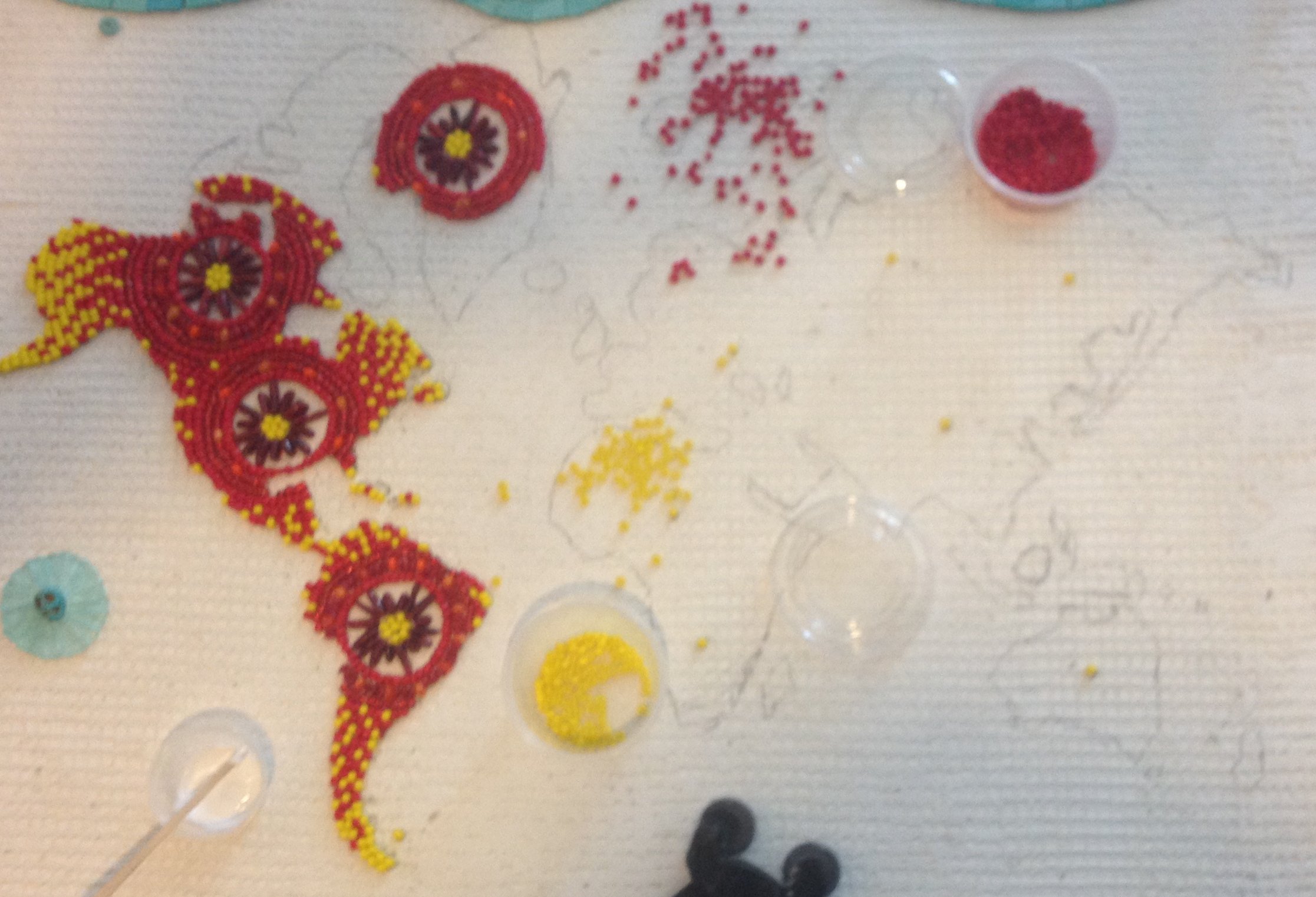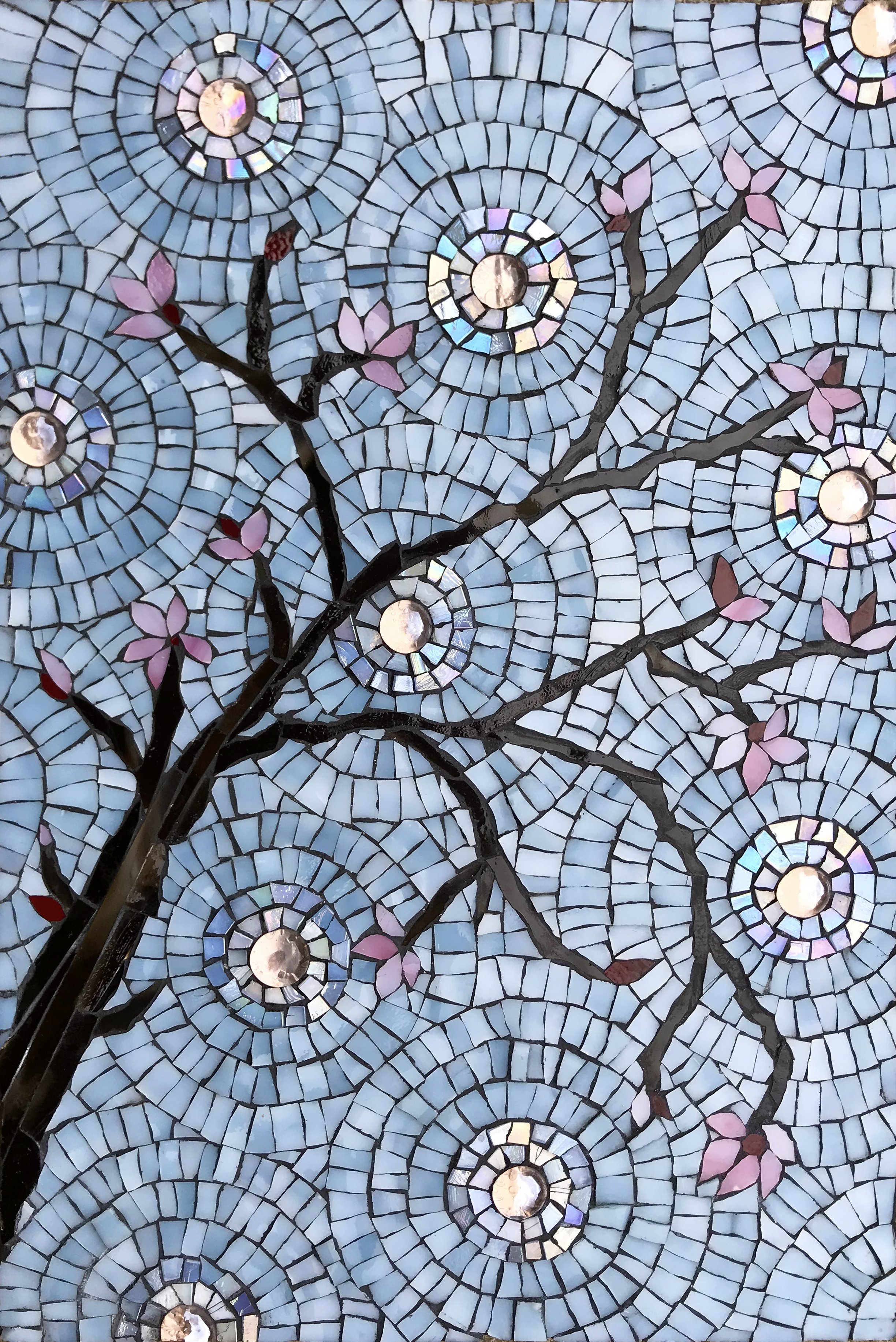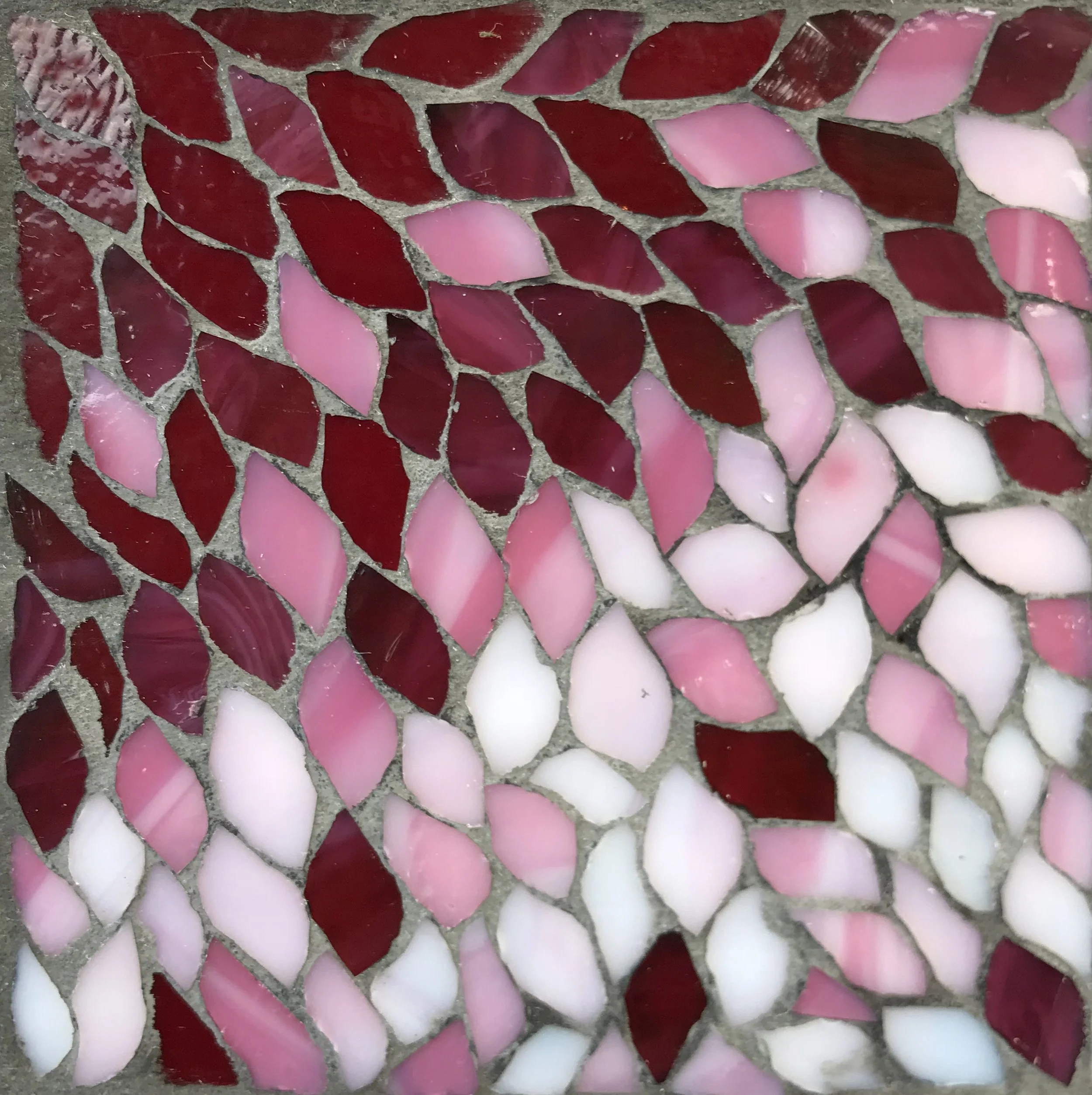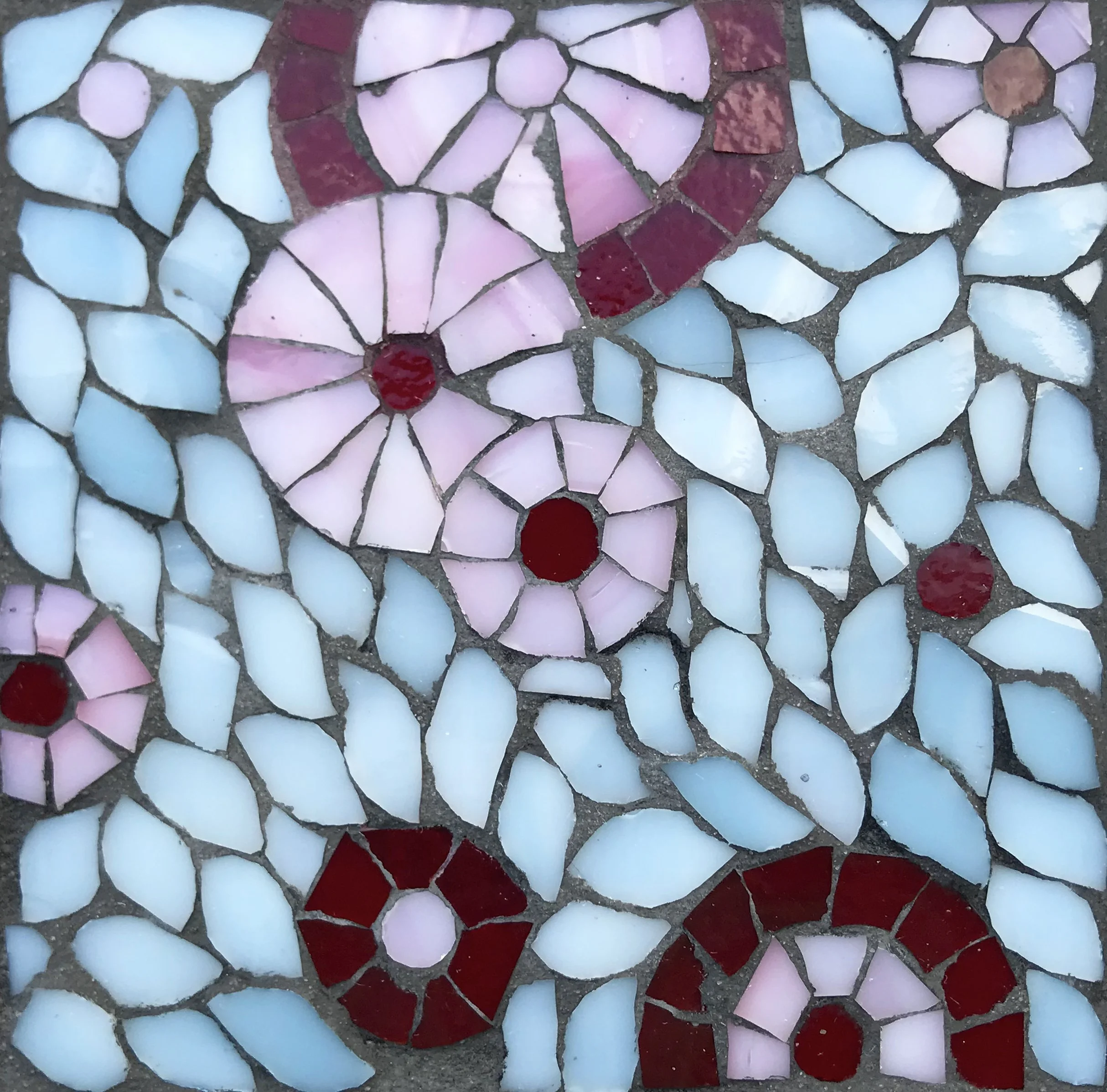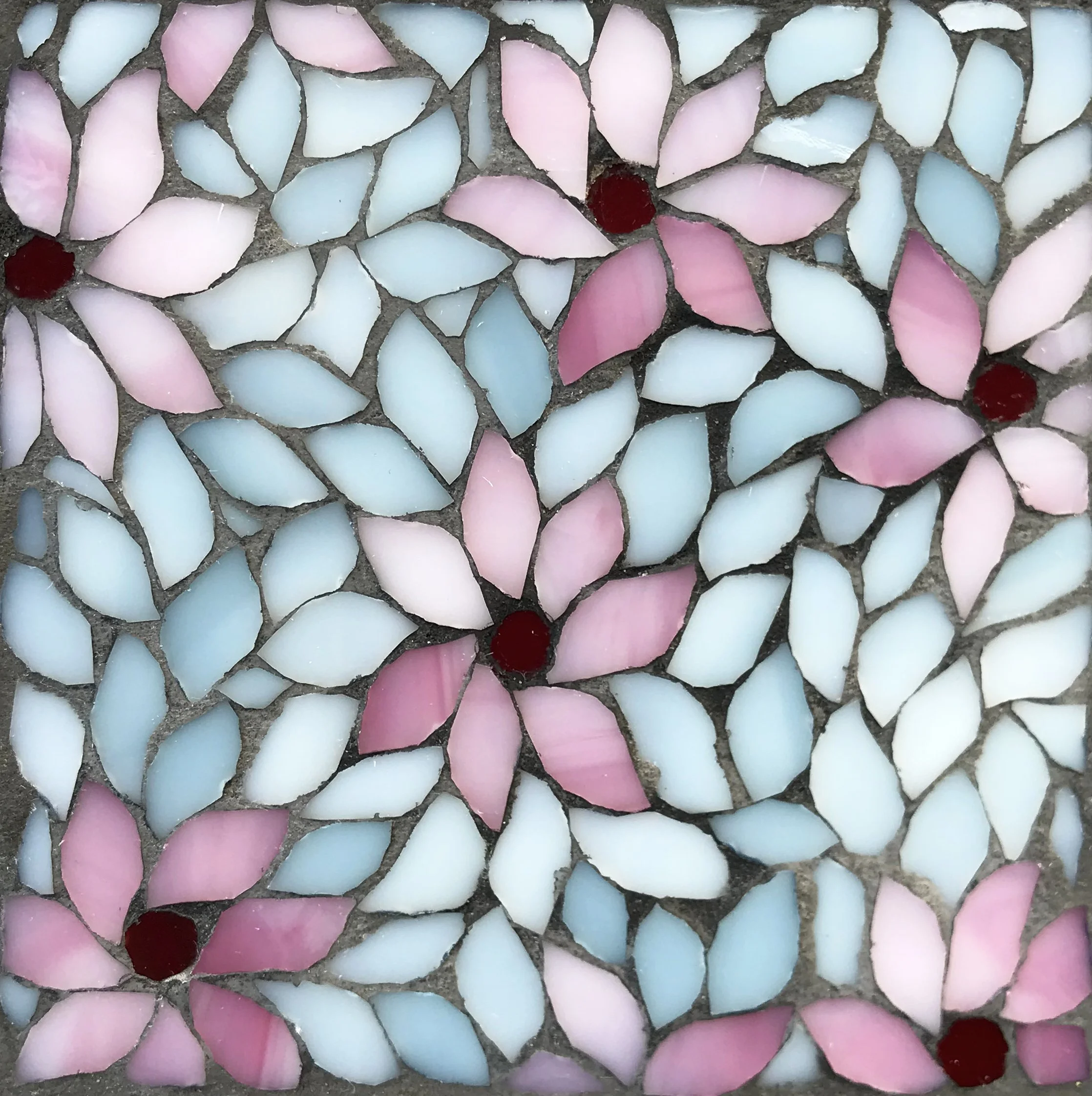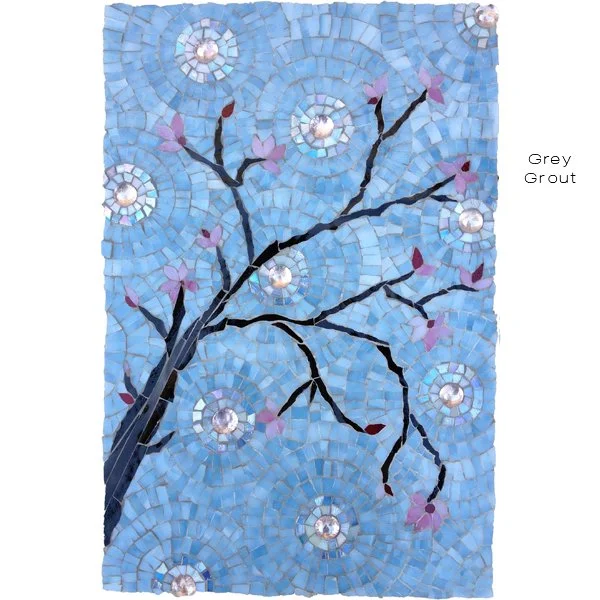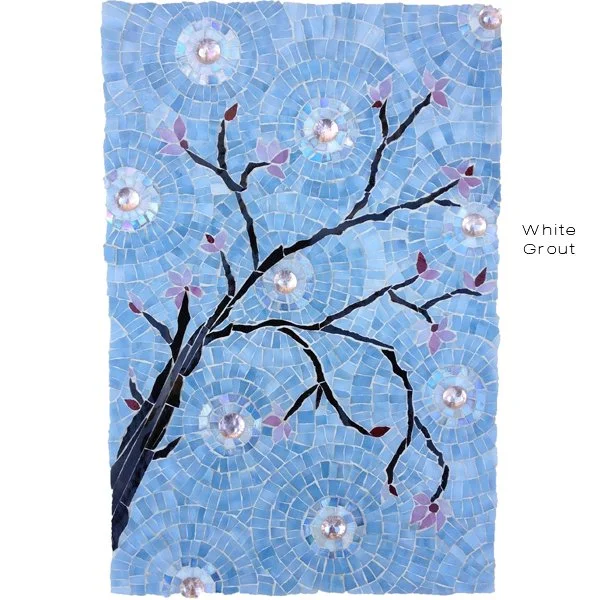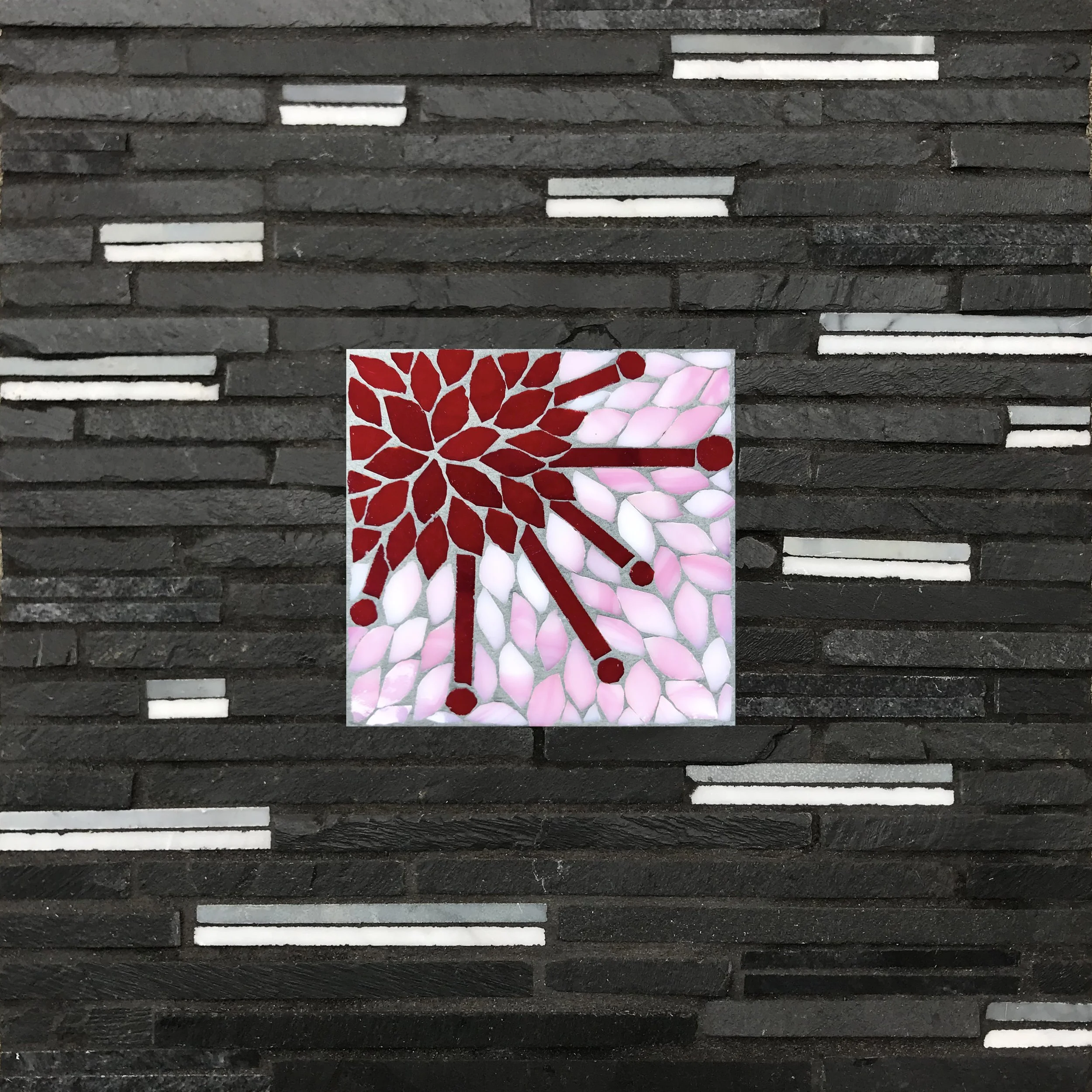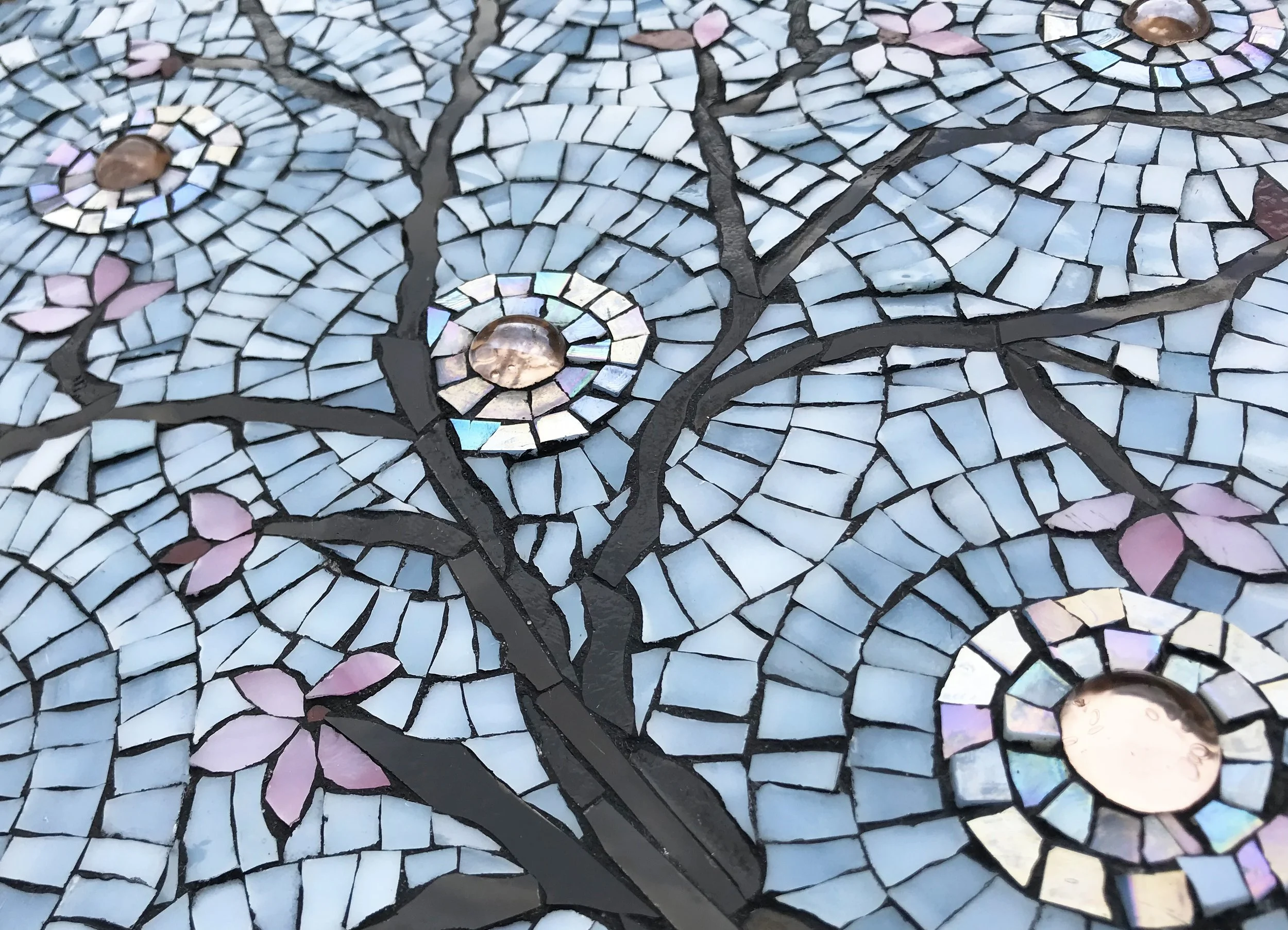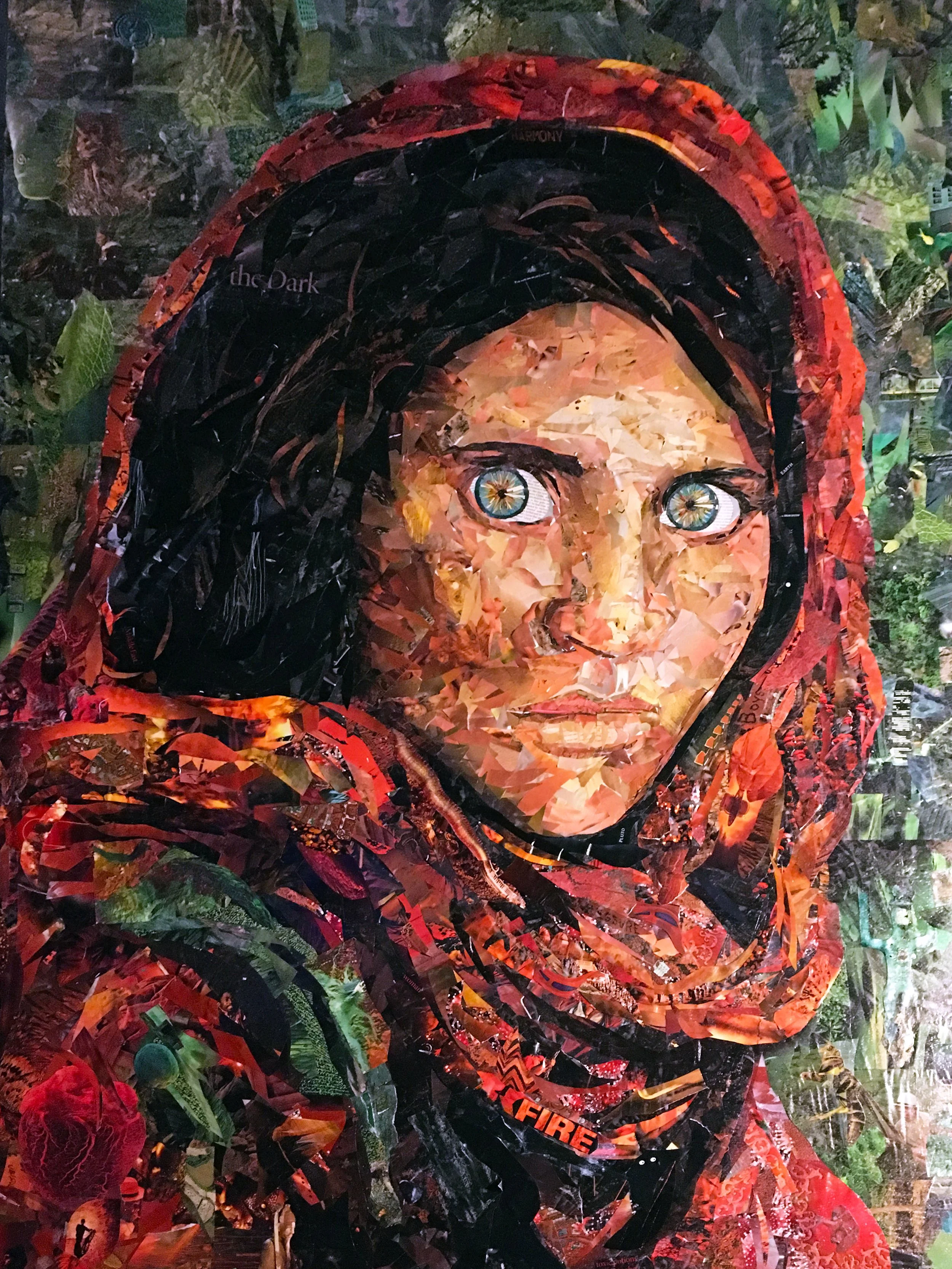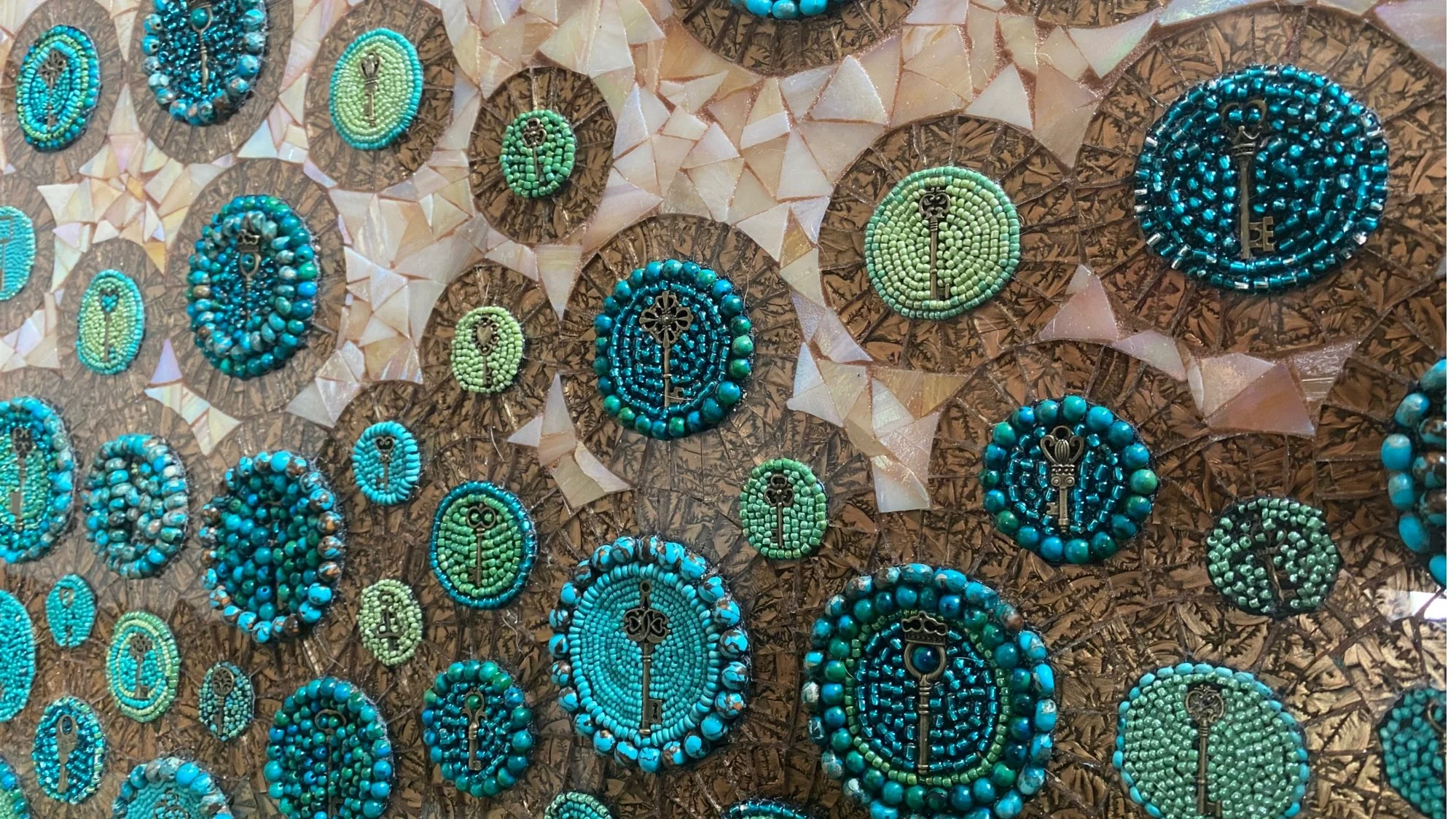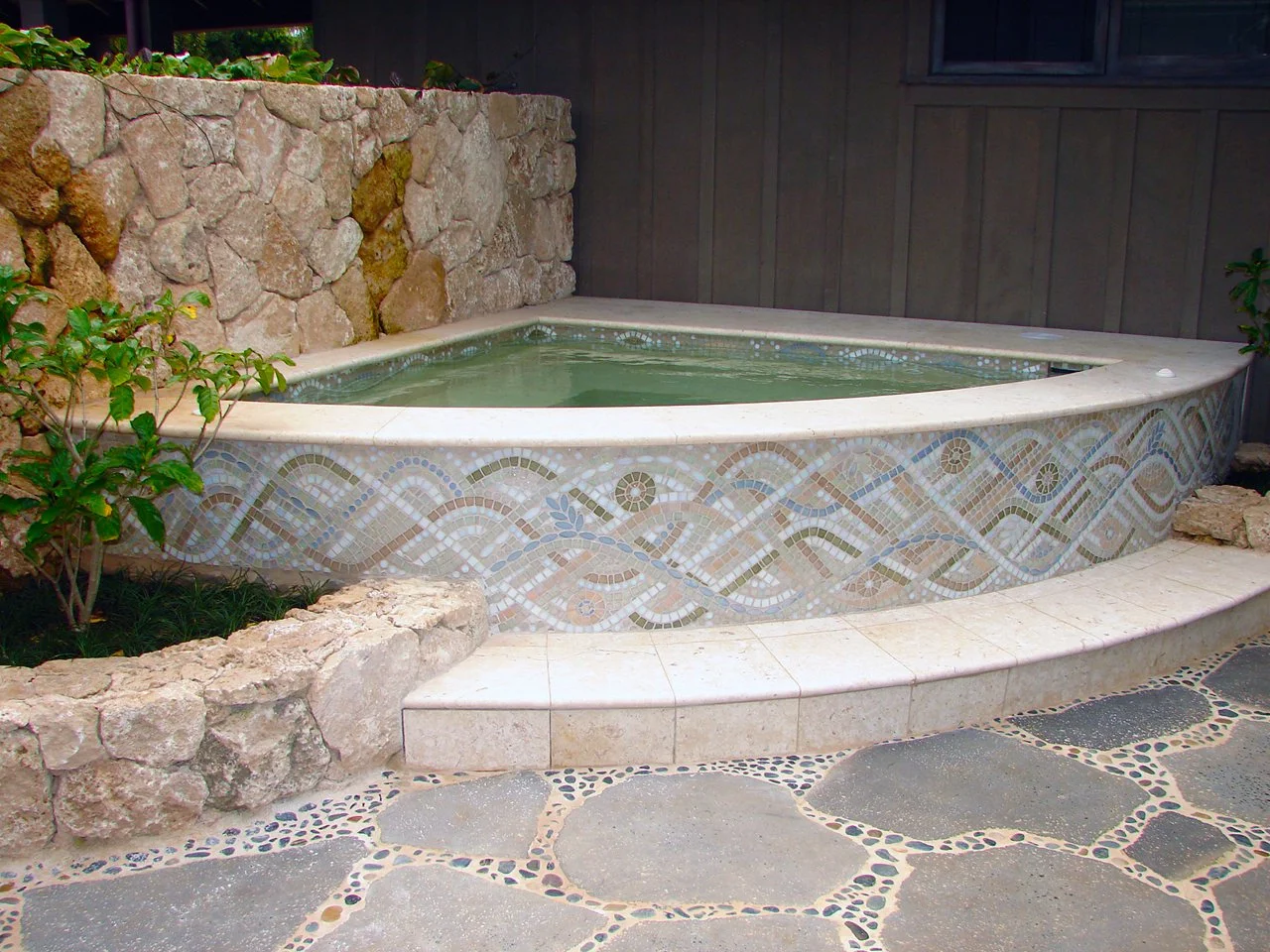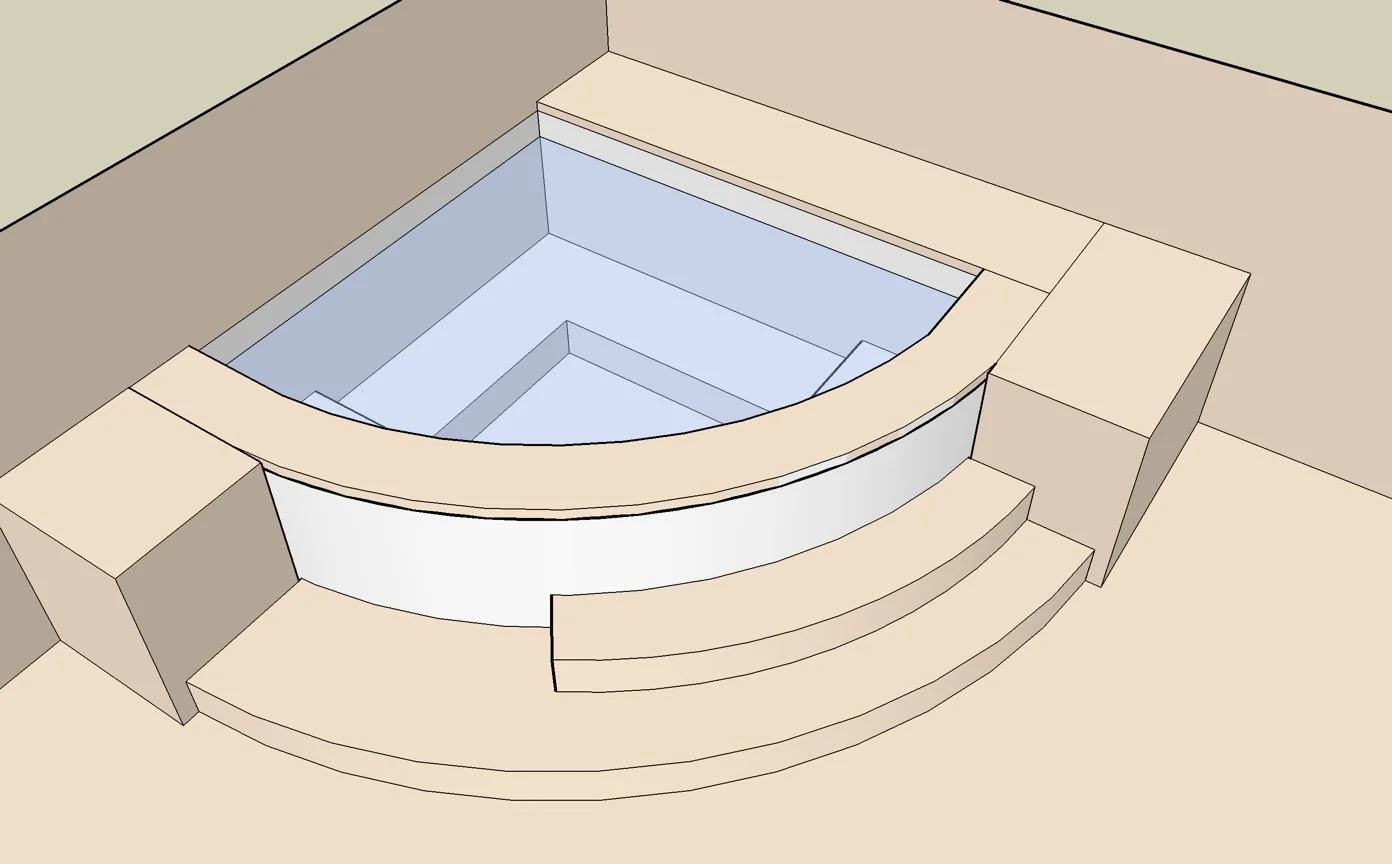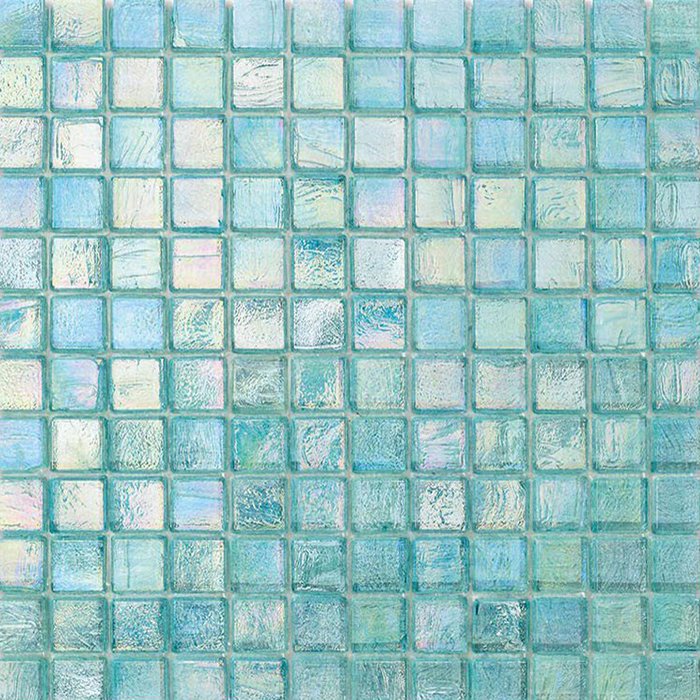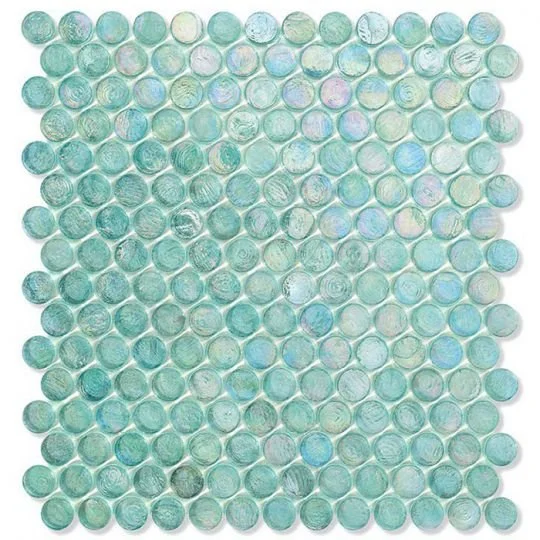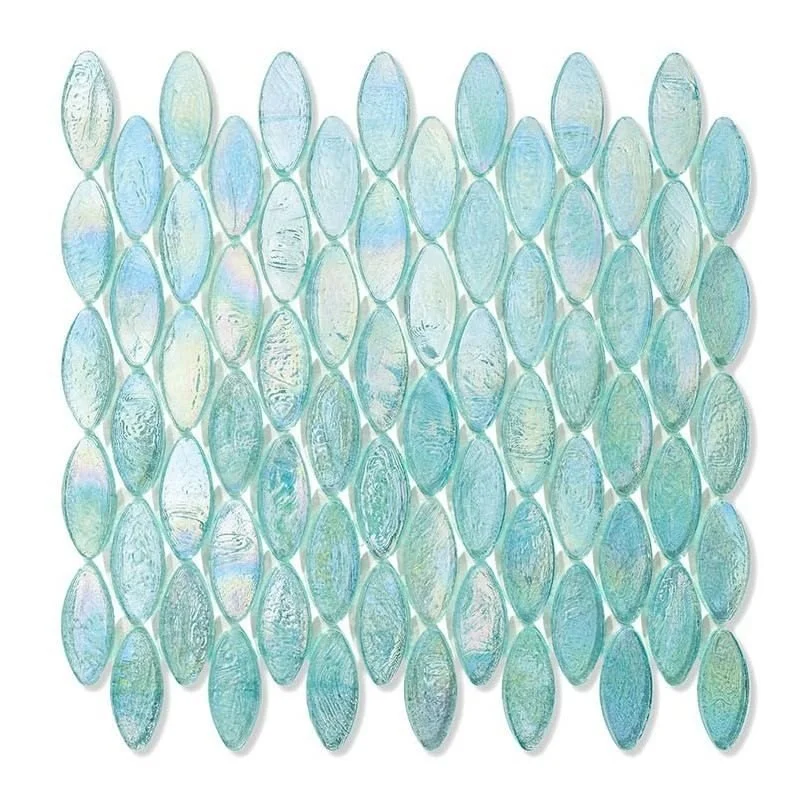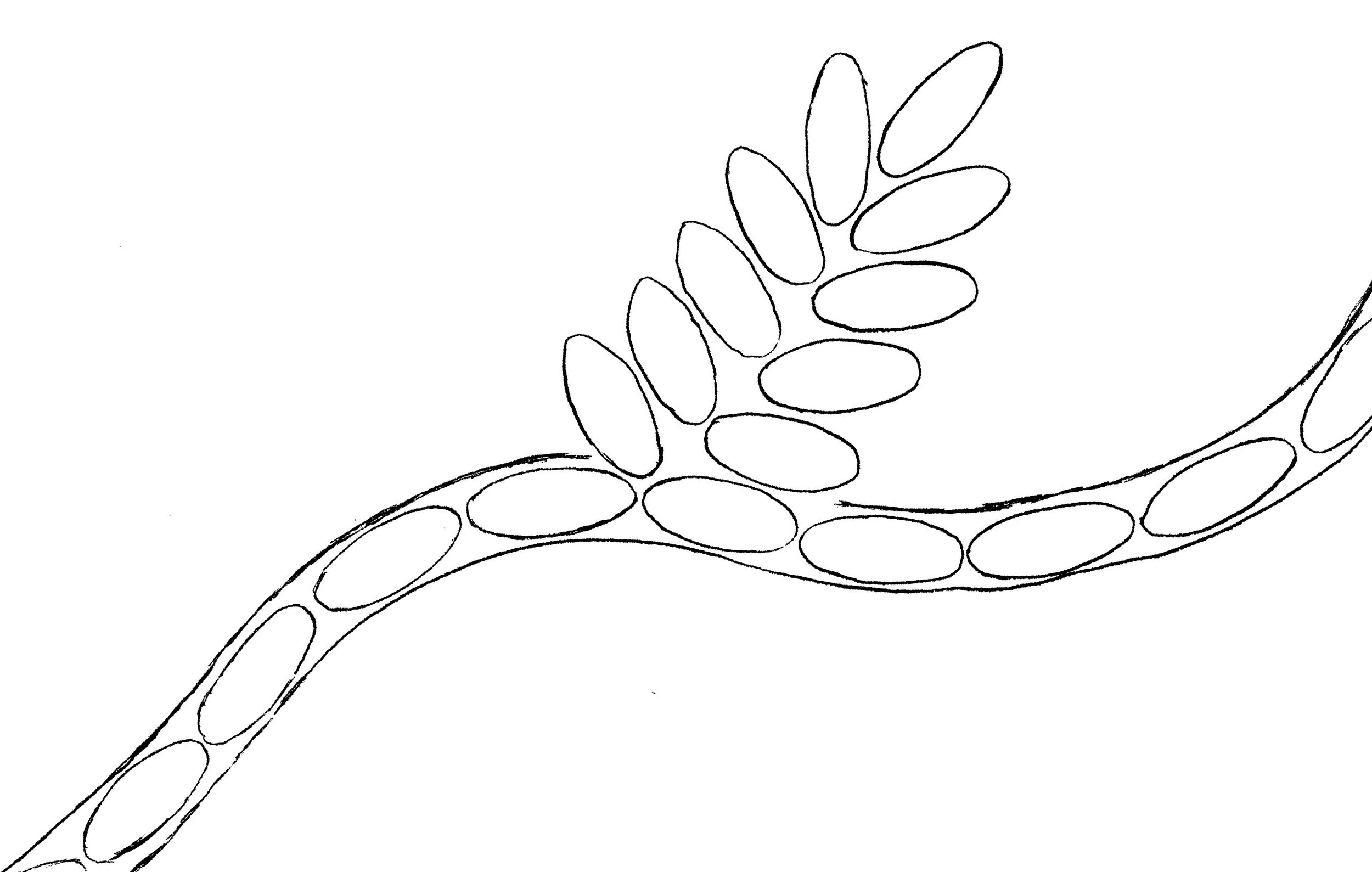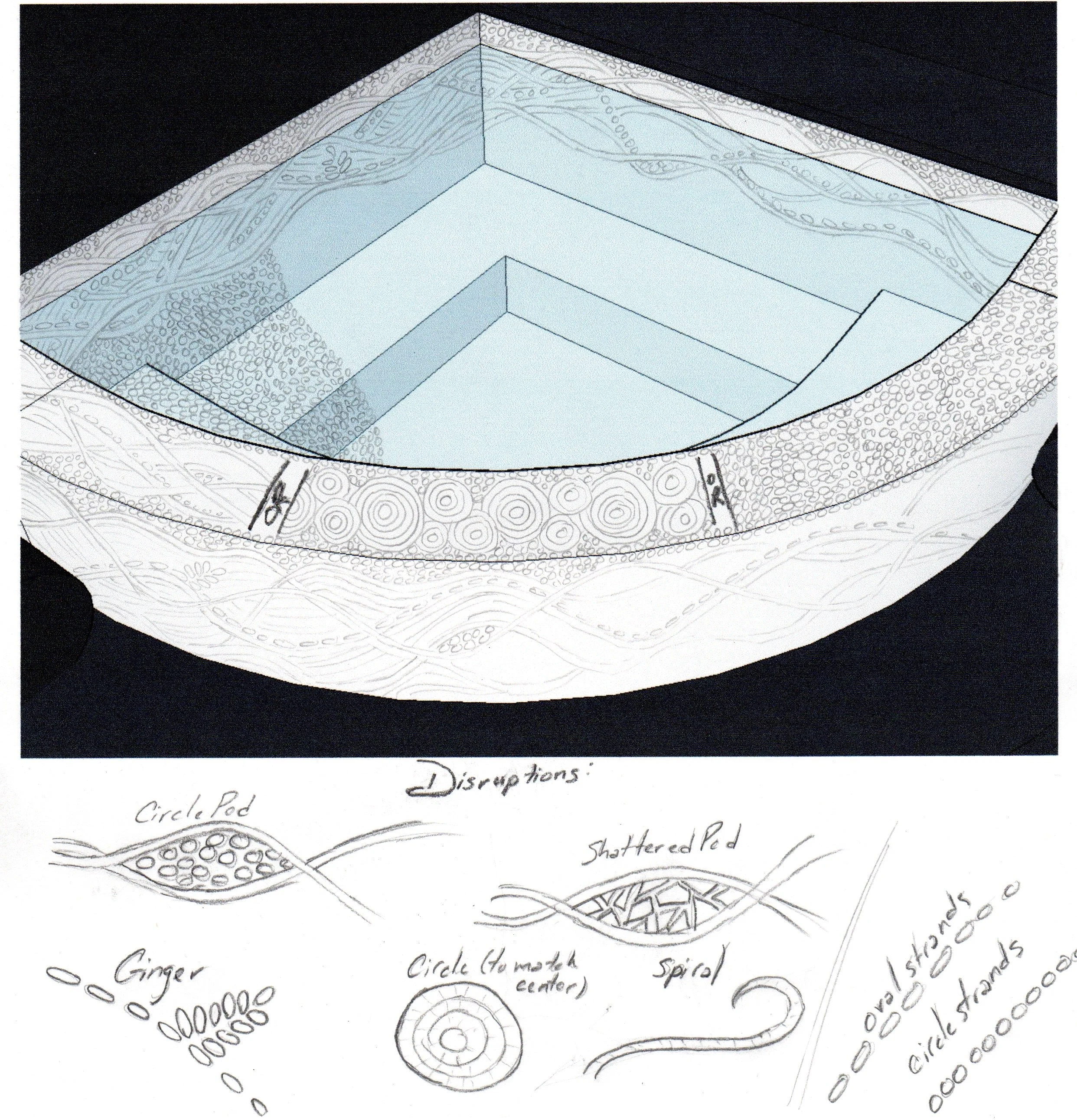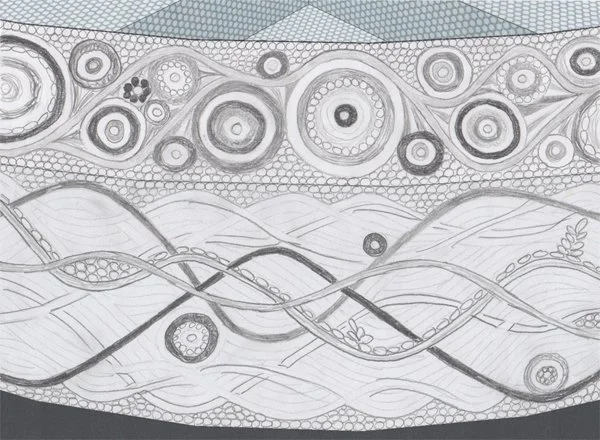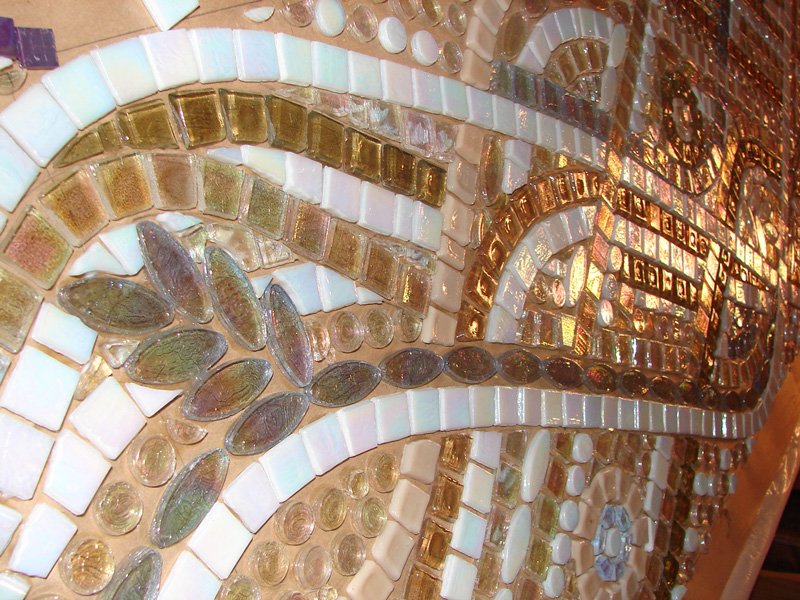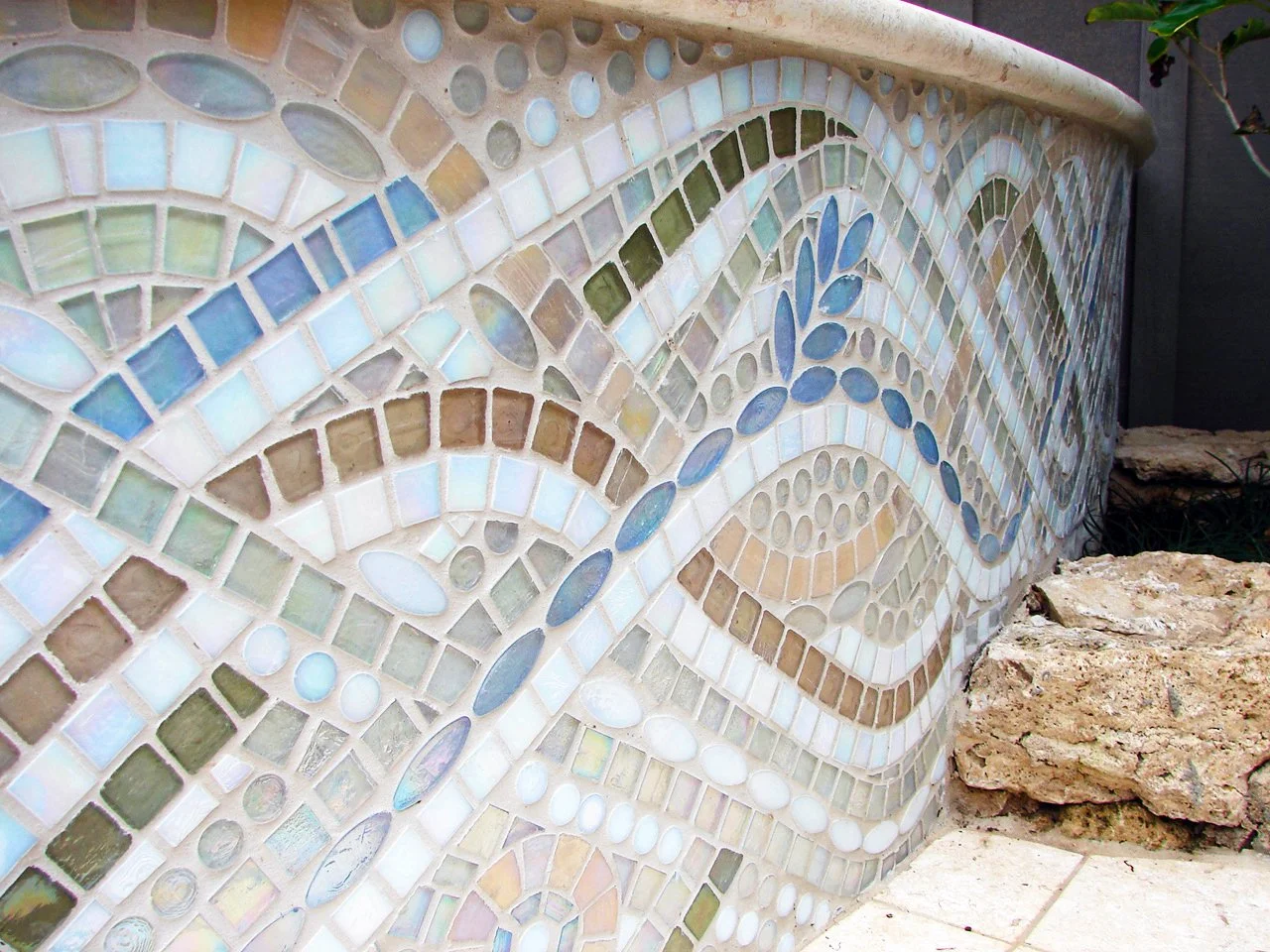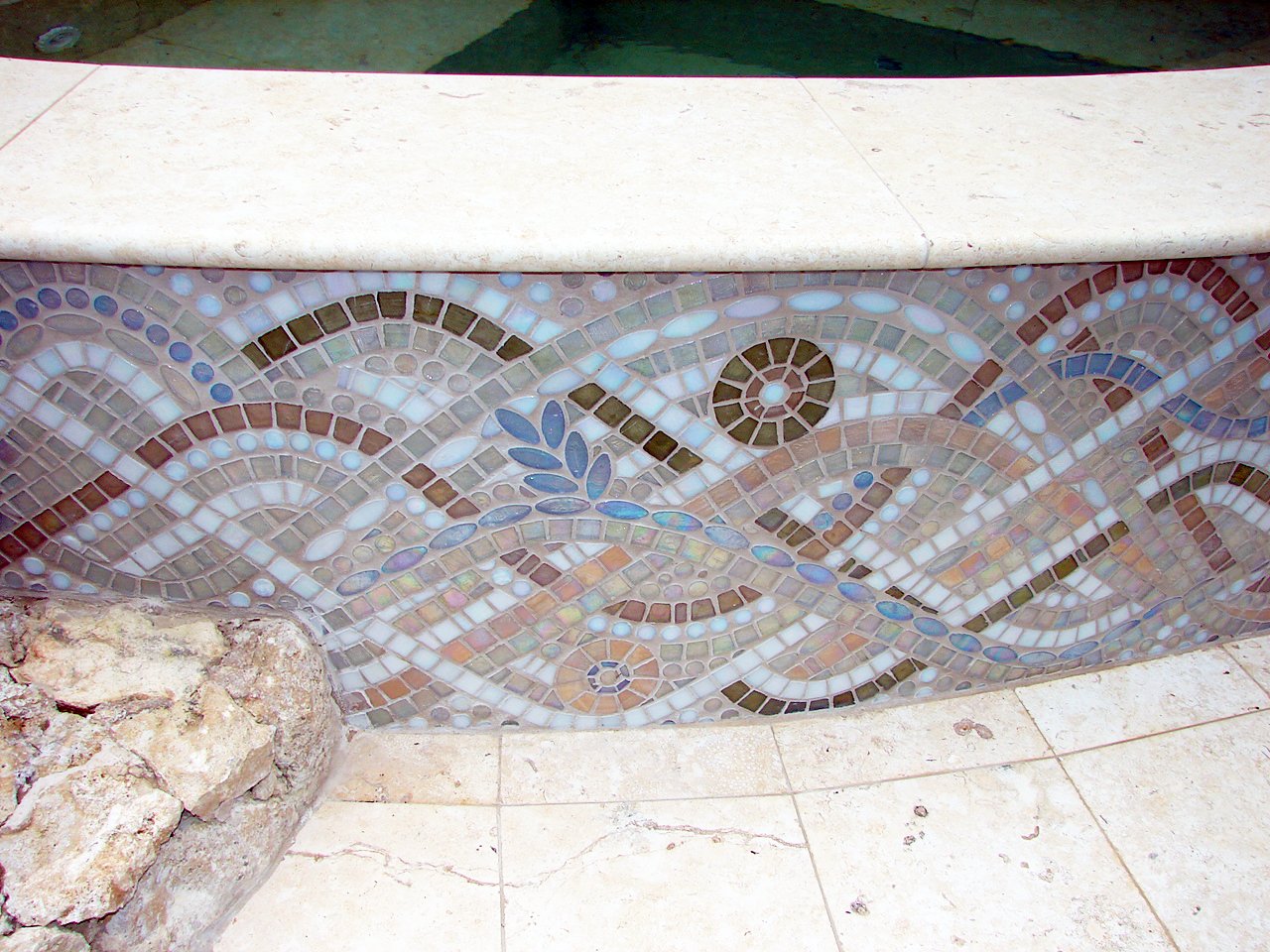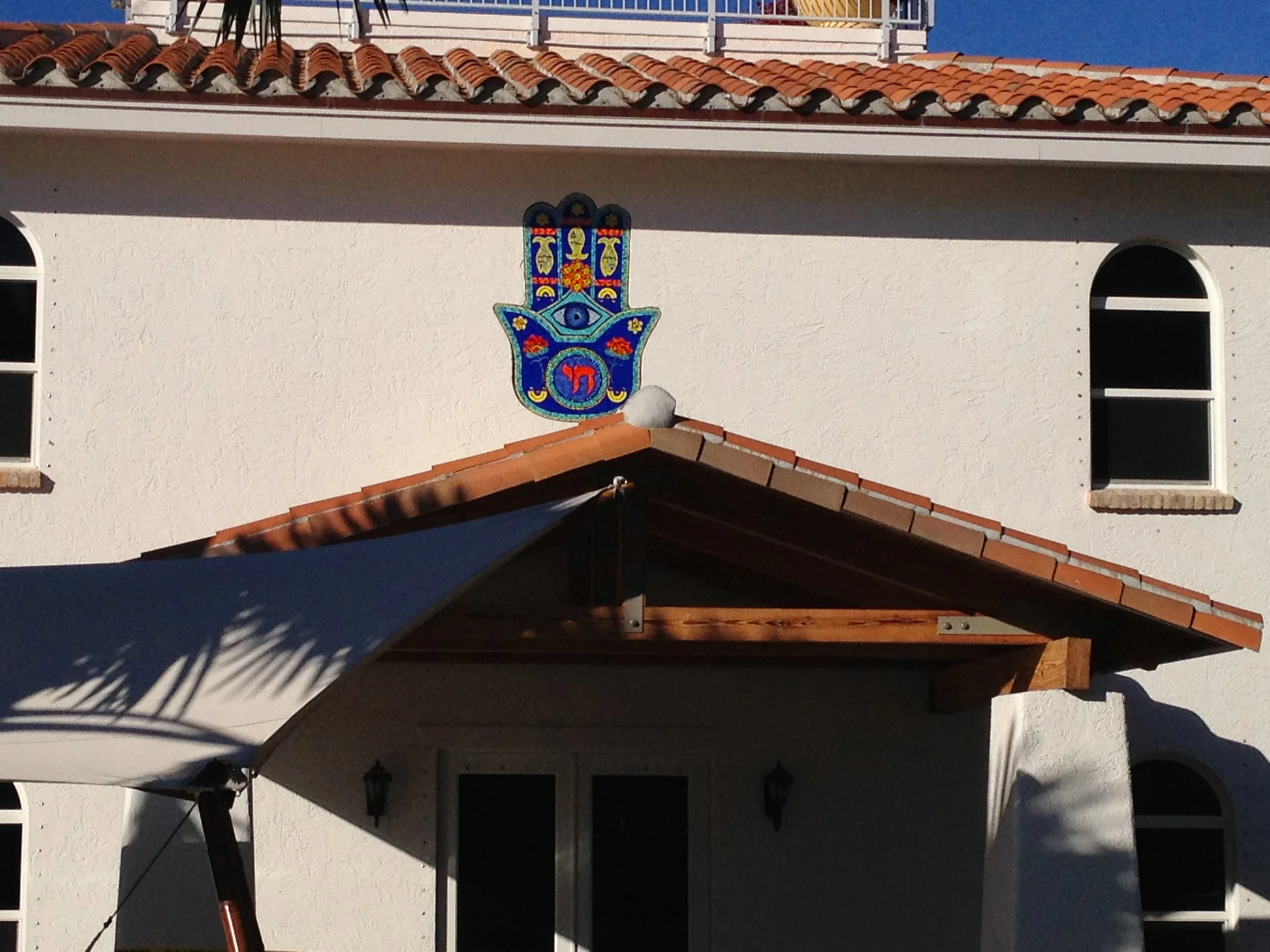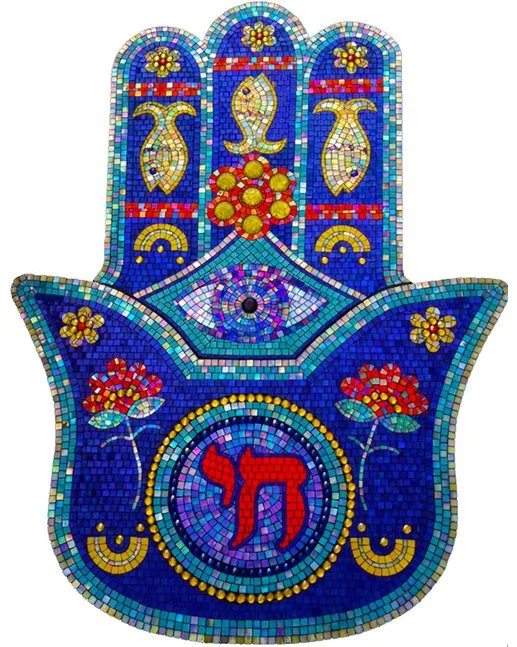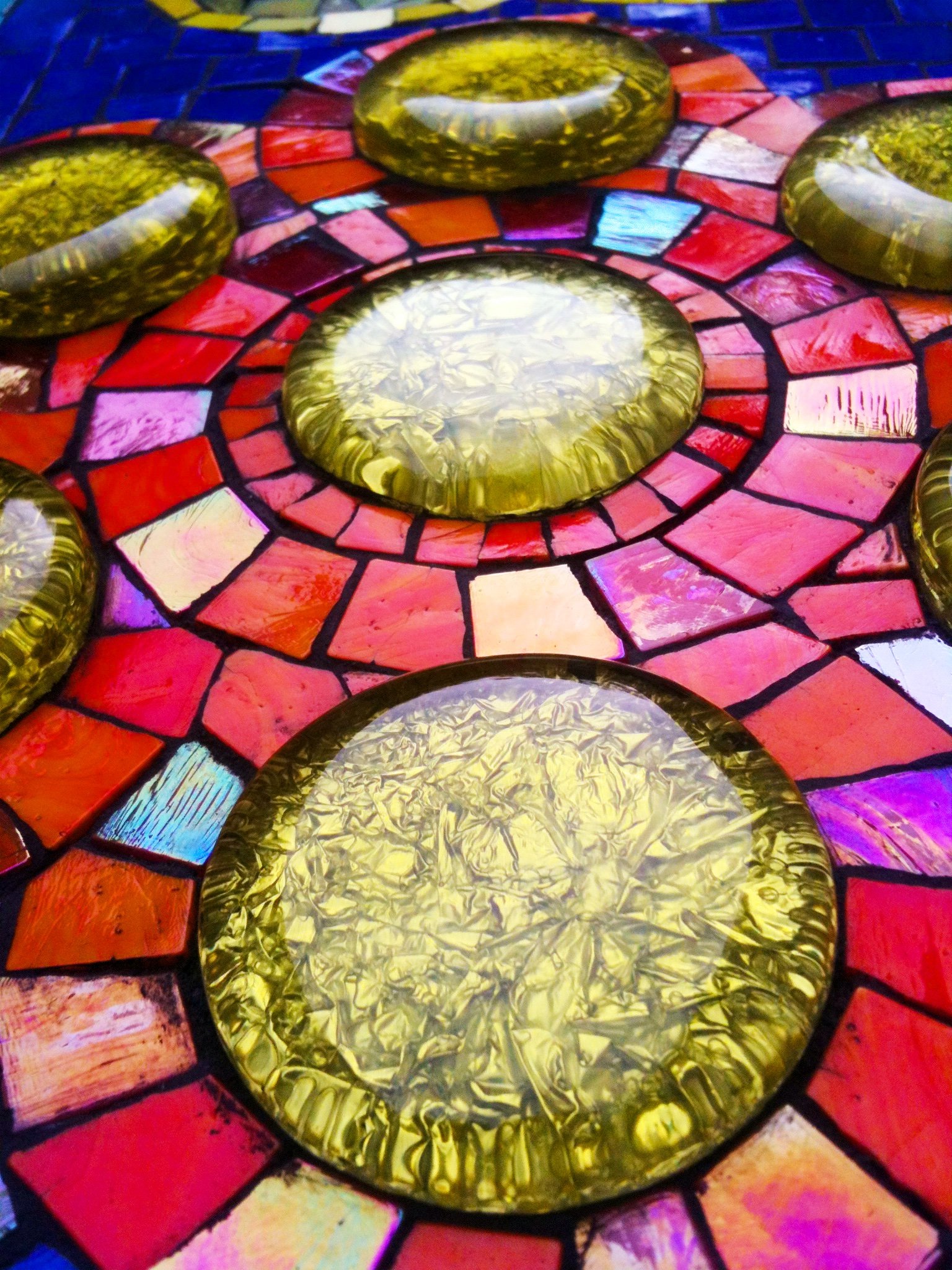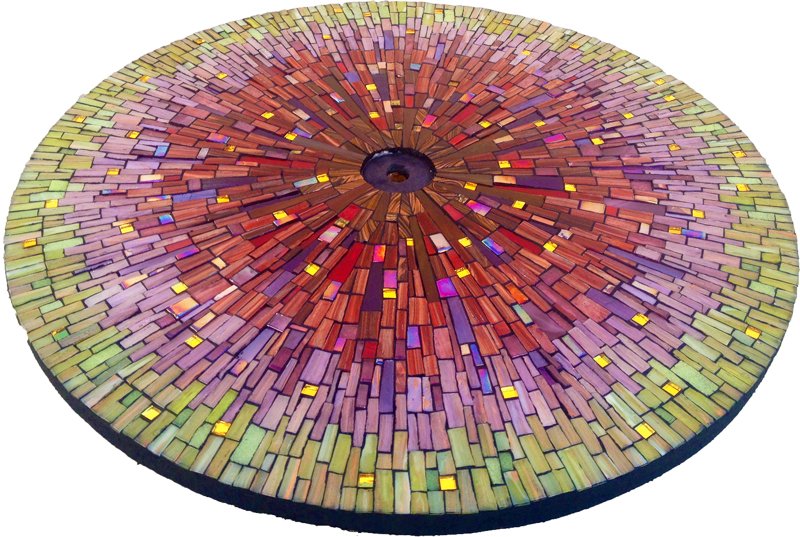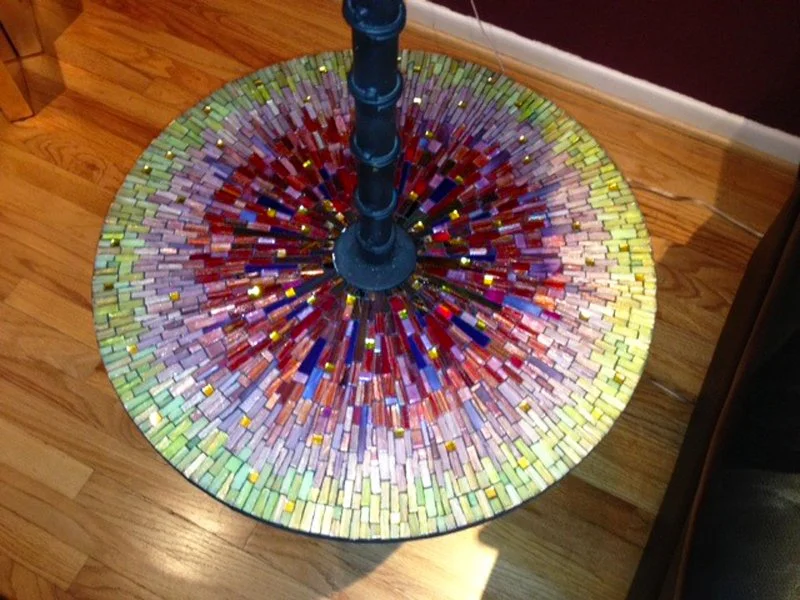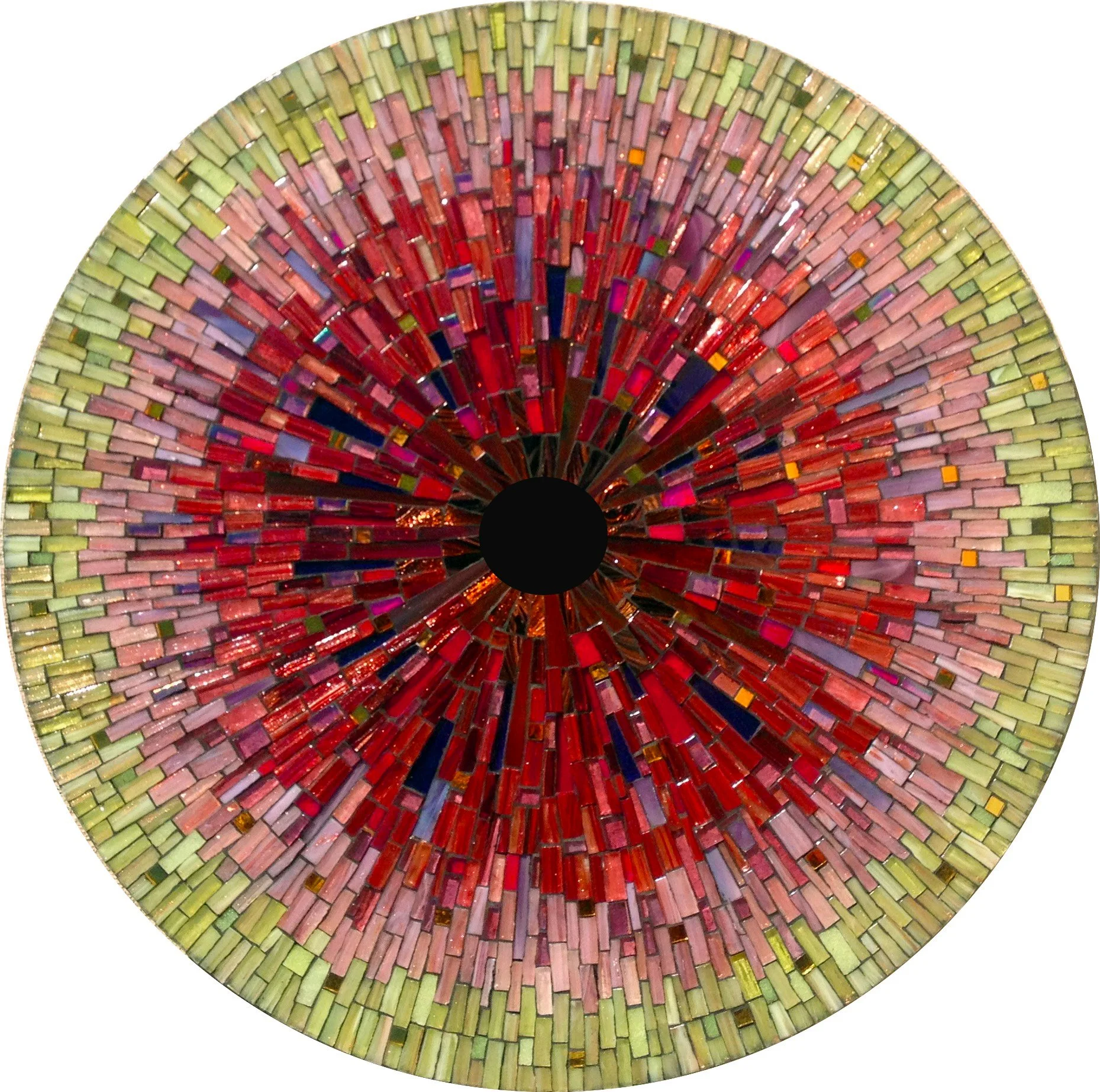Copper I is the first mosaic in my series based on the allure of oxidized copper. This first video explores finding the right tessera for the mosaic and is the first in the series of six videos.
Video transcript for deaf or hard of hearing:
Hey everyone! So during these Corona times I’m waiting for some glass to be delivered from Italy so I can finish up a project that will go to Florida; it’s a large driveway mosaic. And in the meantime I’ve been working on some mosaic gifts for my family, but they are gifts so I can’t show those to you. So what I though I’d show you today is, um, I am starting a new mosaic, a personal project, um, that is based on the idea of copper, oxidized copper. So I’m going to be picking out materials and I though I would show you some of the fun supplies I’m going to be working with and how I go about selecting them.
I’m going to start off with this gorgeous turquoise Bullseye stained glass as a base color for the oxidized copper. My stained glass is pretty accessible in my studio, so I will only pull out a few sheets for now just to get a range for my palette. I’m adding in a nice blue/green swirly glass, then the background color of the mosaic, which is a natural creamy glass, including some iridescence. Then I’ll add in the transition colors: earthy browns, including some with copper tones, and iridescent blacks with funky patterns. This stained glass array is the general palette.
Next I’m going to pick out some gems. Here I have a variety of turquoise to blue, including iridescent and translucent gems for depth, and some milky tan gems in case I need them for the background.
This is Hakatai Aventurine tile. It has gold streaks through it and will be perfect for this project.
Here I have a variety of 5/8” tile from Sicis and Hakatai. To add different thicknesses, I’ve pulled out some thicker tessera: glass, ceramic, marble, and metal.
These super cute glass beads and tiles are only about 8mm. This is millefiori which means thousand flowers, ball chain, pebbles, agate slices and a bit of broken pottery I love, and some beautiful mother of pearl.
Finally we have the beads and found objects. When I had the idea for this series, I put out a call on Facebook and the wonderful Linda Broka was kind enough to send me these metal pieces. I haven’t experimented yet to see how best to use them, but I’m looking forward to it! I also try to collect a wide variety of accent pieces such as broken jewelry whenever they cross my path.
Next, I arrange everything into the color palette. You want a lot of variety when making a mosaic like this so that the final artwork has a lot of texture and depth. I have a good range of sizes, textures, thicknesses, and sheens, so I’m really excited to get started!

